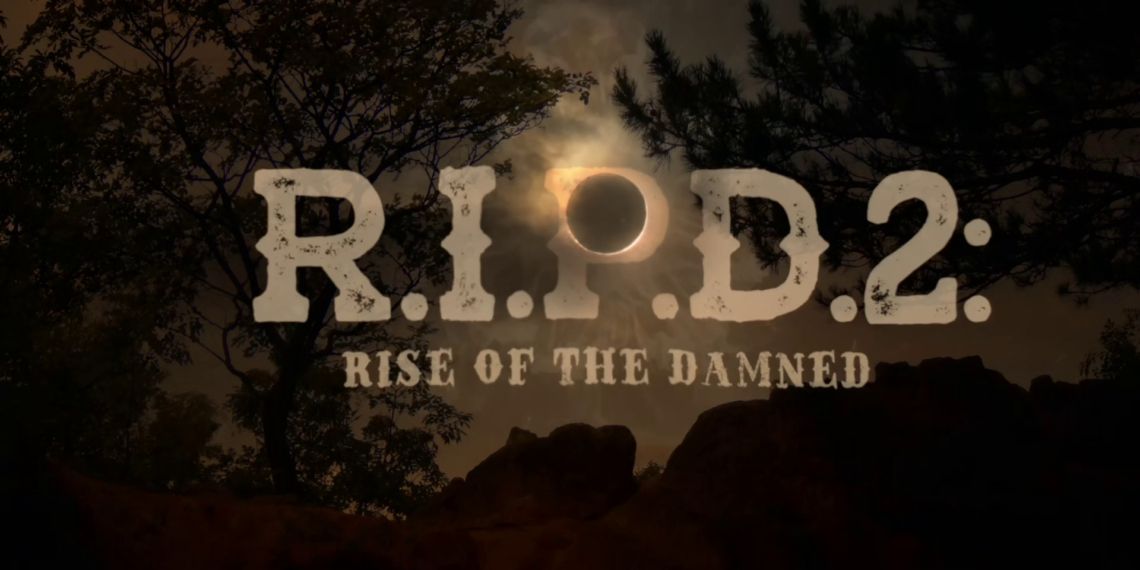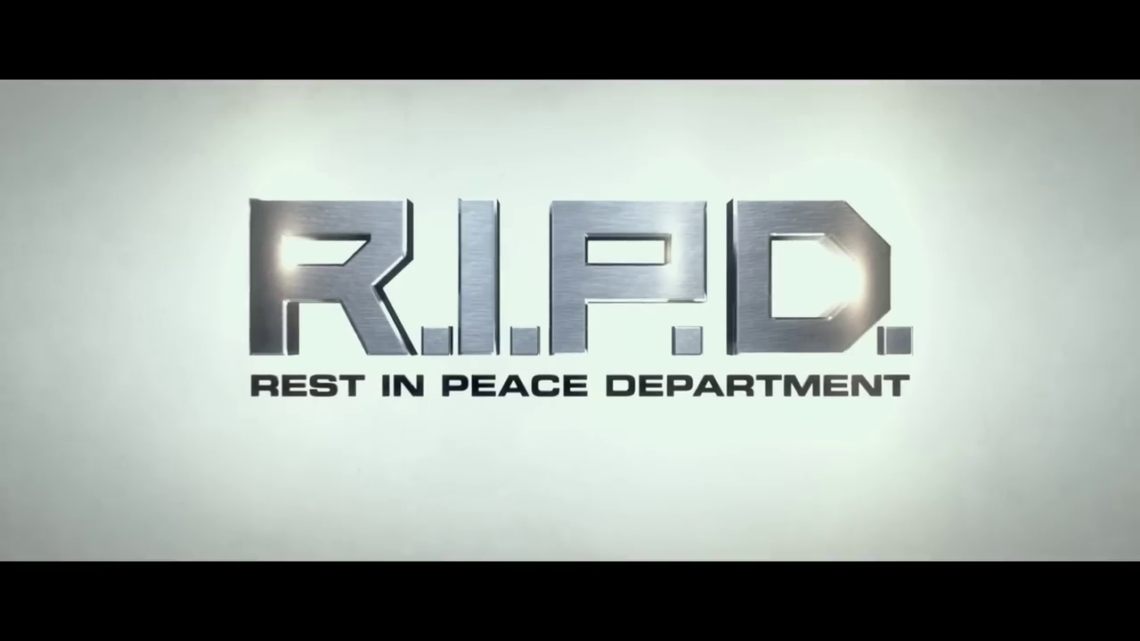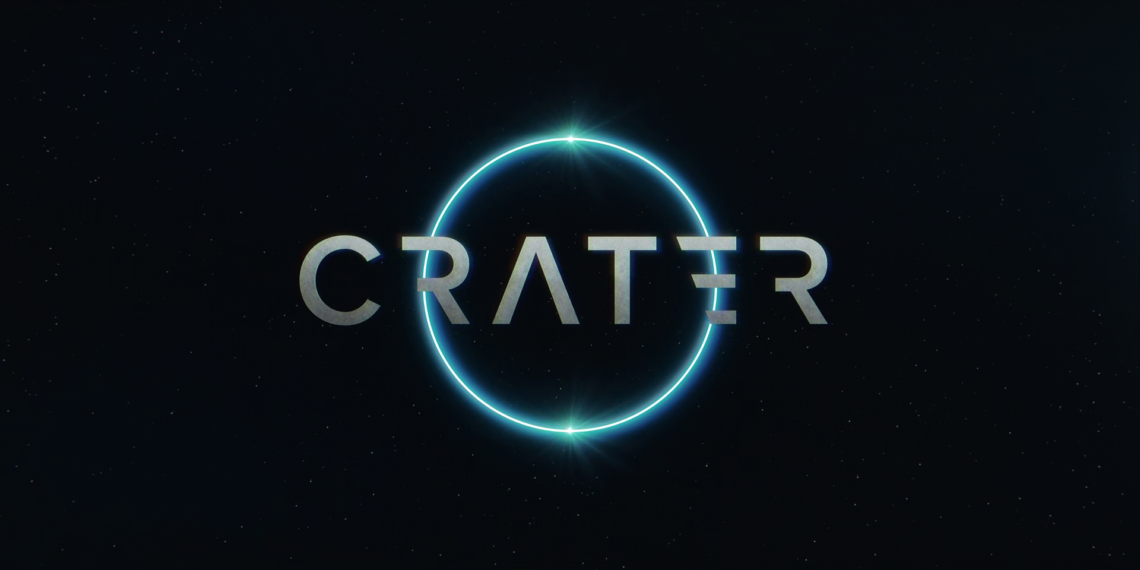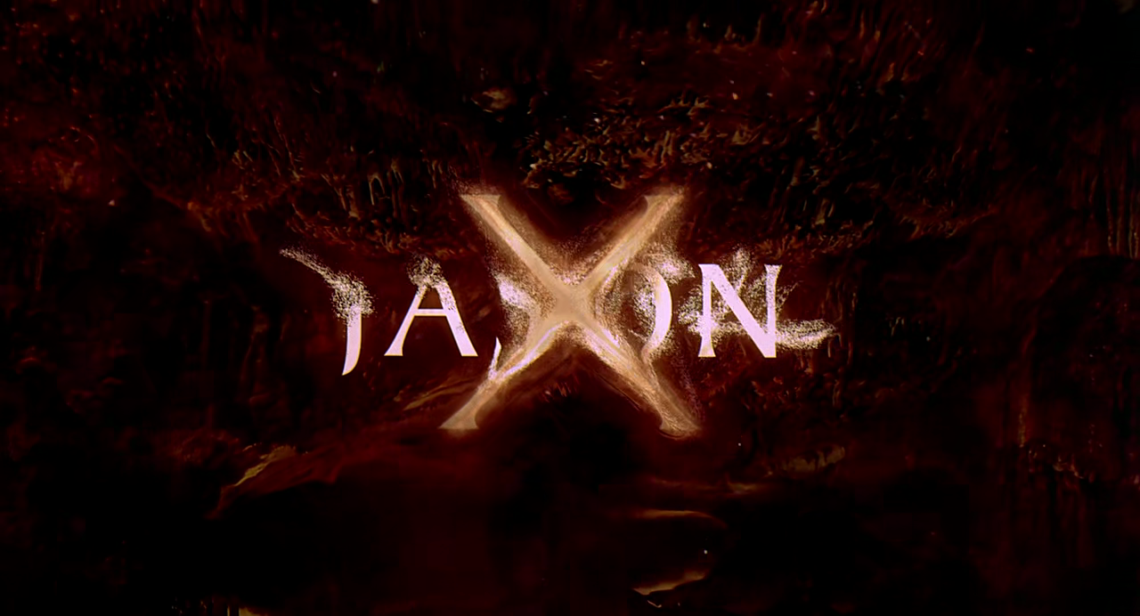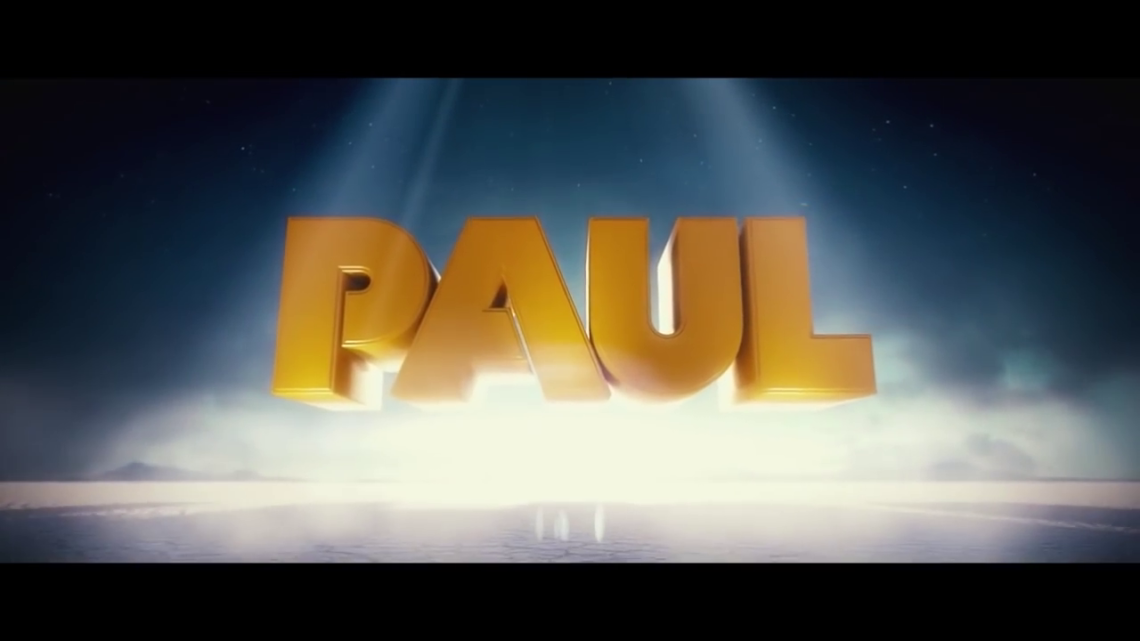-
#577 – Diamond Ninja Force (1988)
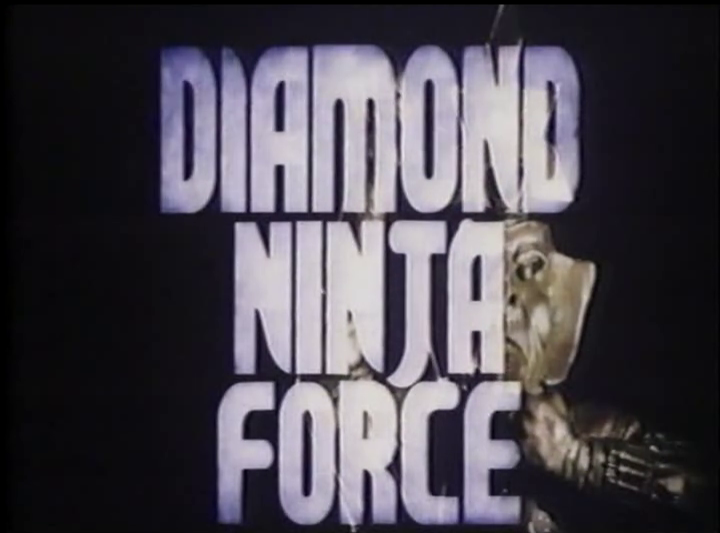




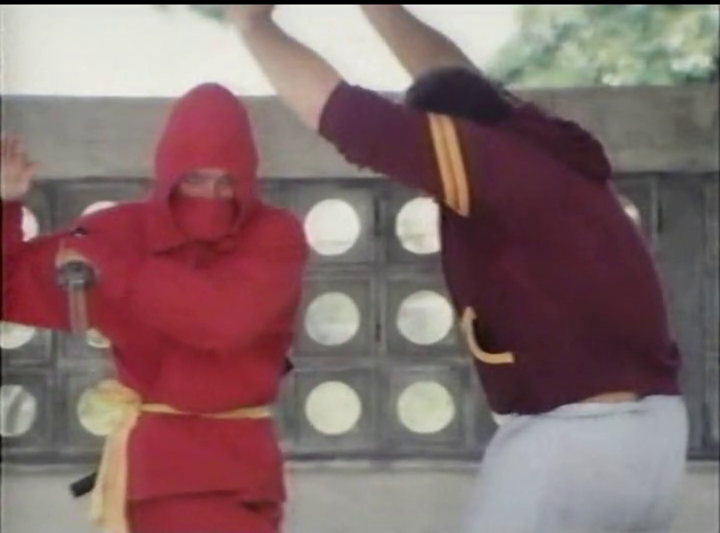
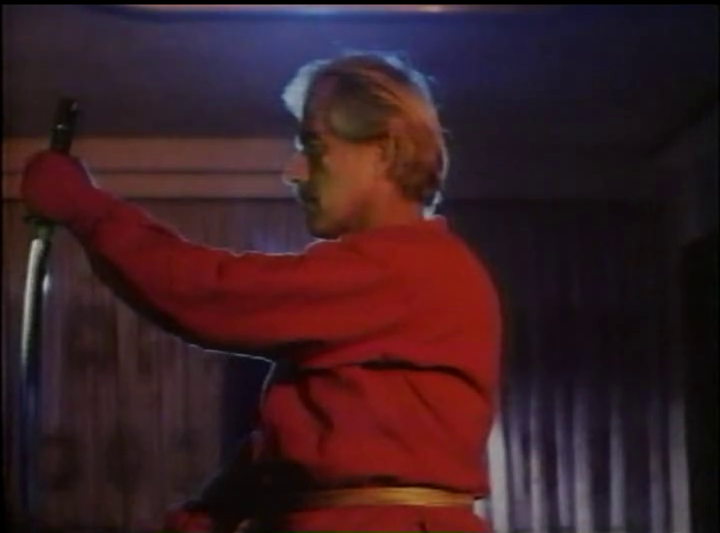
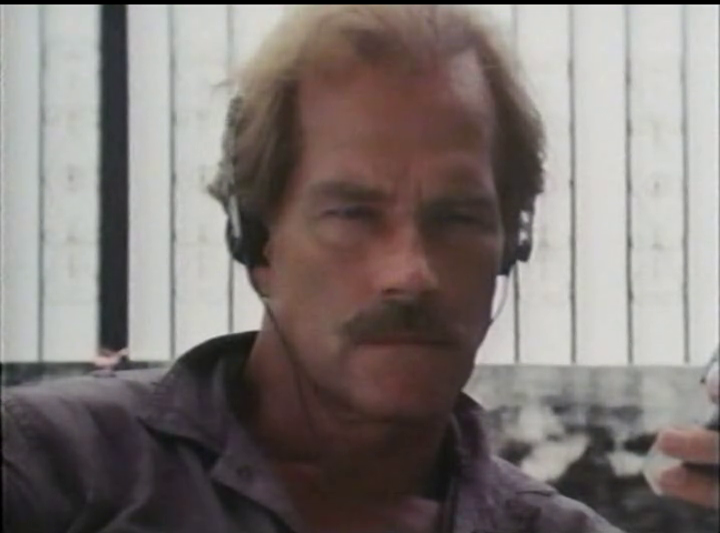

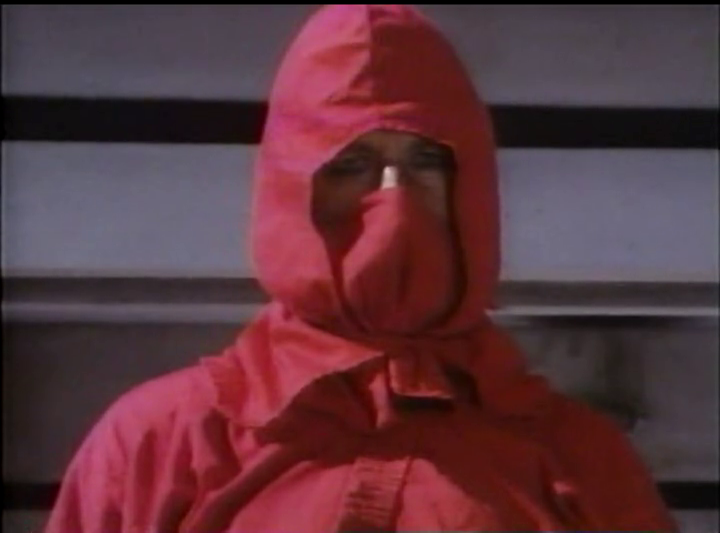
Diamond Ninja Force (1988)
Film review #577
Director: Godfrey Ho
SYNOPSIS: Construction work unearths human remains that turn out to be the burial site of the magical Black Ninja Clan. Their descendants try to blackmail the land owners to sell the land of them but they refuse, forcing the Black Ninja Clan to hire a witch to mess with them. the owners hire Gordon, a magical ninja from another clan, to defeat the Black Ninja Clan.
THOUGHTS/ANALYSIS: Diamond Ninja Force is a 1988 martial arts film. The plot revolves around Gordon, a ninja who is hired to stop the evil Black Ninja Clan from blackmailing and threatening a landowner and his family who have unearthed the burial grounds of the Black Ninja Clan following some construction work there. The clan also hire a witch to use her magic on the landowner’s family, so they call in Gordon, another ninja to stop the Black Ninja Clan. If the plot sounds all over the place, then there is good reason for that: that’s exactly what it is. The film opens up with an introduction by martial artist Shô Kosuge, who introduces the katana to viewers; he does not, however, mention the film you are about to watch in any capacity. The film itself doesn’t make much sense, in part because it is composed of bits of different films stitched together that barely relate to one another. There’s a horror film about a family being haunted by an evil spirit that forms part of the plot, and the scenes with Gordon in are clearly made after to fit around them. As a result of this mish-mash of footage, the film has no sense of pacing or structure. Some scenes last far too long, such as the awkward sex scene, and the whole sub-plot concerning a horny witch relates to nothing. In fact, the whole element of magic just makes little sense.
Gordon seems to be the least likely candidate for a ninja that you could possibly imagine: he is a middle-aged, moustached white man. What sort of Ninja clan he is supposed to be descended from I have no idea. Richard Harrison, who plays Gordon, also played a ninja in a previous Godfrey Ho film: Ninja Terminator, but this is not a sequel to that film, as the character he played in that film was named Harry. however, he had the same wife, ninja powers, and even the same Garfield-shaped phone he would use, which just makes things even more confusing. The rest of the characters don’t really make much of an impact: their voices are dubbed over the footage from other films so there’s very little holding everything together. While there is clearly a bit of choreography done in the fight scenes, it offers nothing exciting or special; just some backflipping to dodge some bullets which seems wholly inefficient. Overall, Diamond Ninja Force is a mess, but an expected mess typical of Ho’s work. The lack of any kind of pacing, reason or coherence in this film makes it tough to get through, and while there’s a few points that are pretty funny because of how bad or out of place they are (such as the Garfield phone), on the whole it just fails to be entertaining. Maybe worth a watch just to see how absurd it is.
-
#576 – Eagle Island (1986)

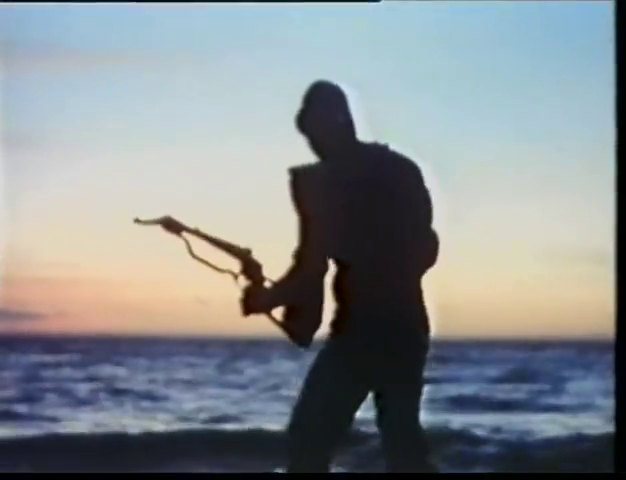
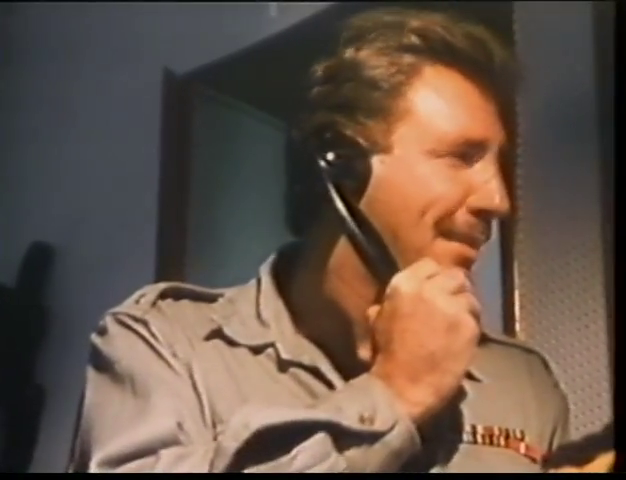

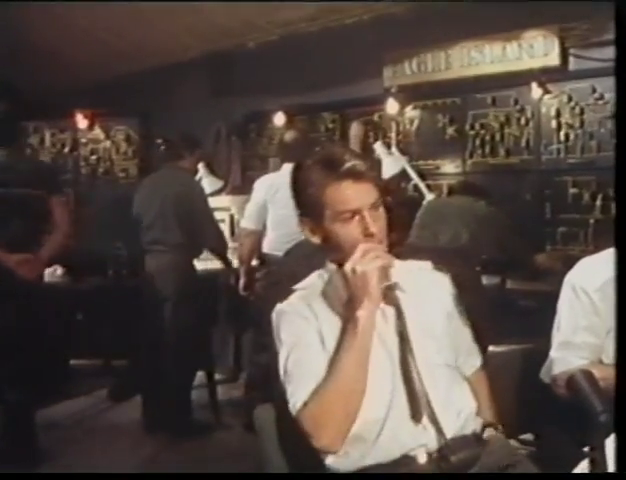
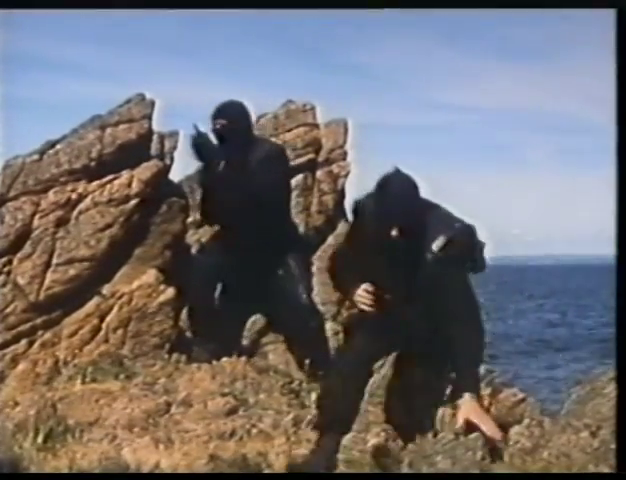
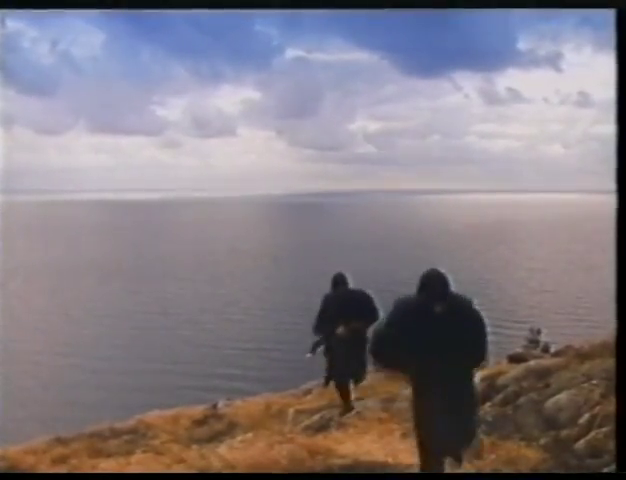
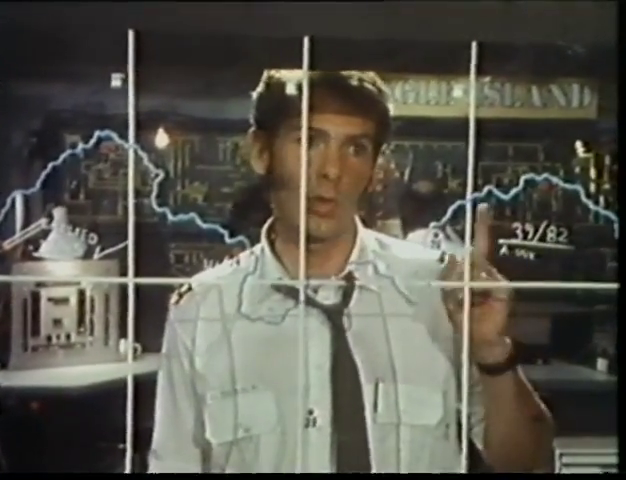
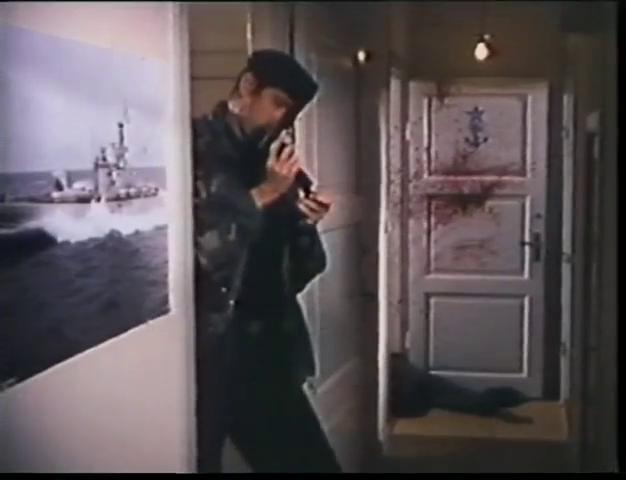
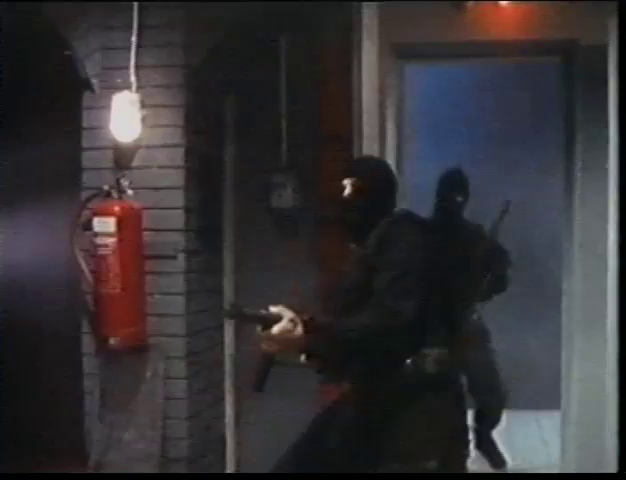
Eagle Island (1986)
Film review #576
Director: Mats Helge
SYNOPSIS: A military installation in Sweden comes under attack by Russian special forces ninjas. The soldiers on the island attempt to fend them off from obtaining a secret code.
THOUGHTS/ANALYSIS: Eagle Island is a 1986 action film. Set on Eagle Island (unsurprisingly) somewhere near Sweden, a military installation comes under attack from a group of Russian special forces who might also be ninjas, looking for a secret code, and the inhabitants must fend off the attackers. There’s not much else to say about the story: it is both completely devoid of any substance, and overly convoluted with additional characters that serve no purpose. The main thread of the story (apart from the Russian ninjas) is a guard on the island who has to escort a woman trespassing on the island to take photos of the eagles that give the island its name back to the mainland. The two inexplicably fall in love and get together, and when they learn about the Russian ninjas, they decide to go back to the island to stop them or something. It sounds like a premise which might be interesting, but there is so little that actually happens in the film you’ll be horrendously bored and disappointed that the film doesn’t match the premise.
Probably the most disappointing aspect is that the “ninjas” aren’t really ninjas at all, and just use weapons. Obviously the film wanted to capitalise on the ninja trend, but without wanting to do the choreography and stunts for it. The action is just the occasional gunfight, and as mentioned the story is all over the place and fails to establish any of the characters in any real depth. The most notable aspect of the film and it’s only real saving point is the soundtrack: it is the most eighties soundtrack you can ever imagine, and the synths and beat goes hard. It’s actually not a bad soundtrack either, but it is wholly misplaced in this film, and just adds to the sense of confusion experienced while watching. Overall, Eagle Island is a mess that is devoid of any real story, its characters have no personality or development, and the soundtrack is just so out of place it’s difficult to comprehend it. You don’t need to let you curiosity get the better of you with this one: there’s really nothing of value here.
-
#575 – R.I.P.D. 2: Rise of the Damned (2022)
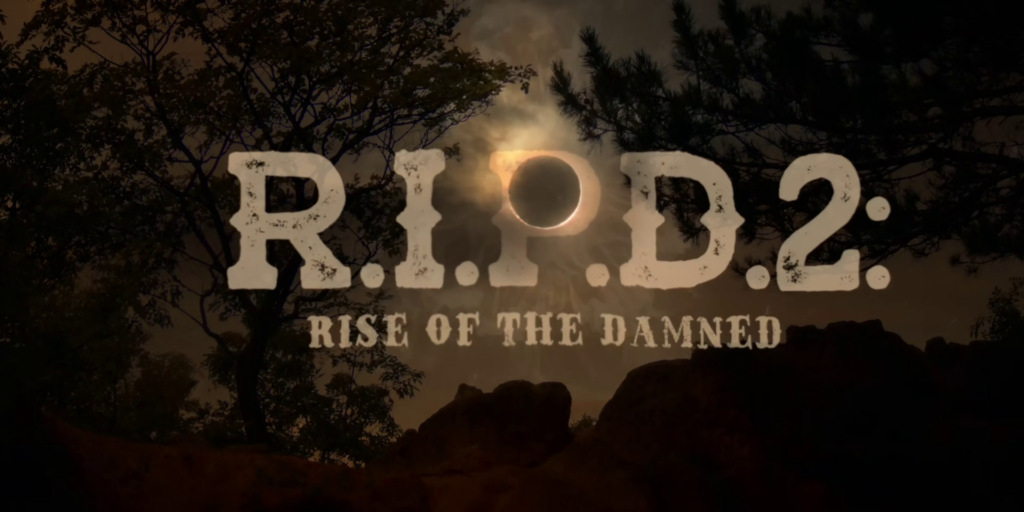
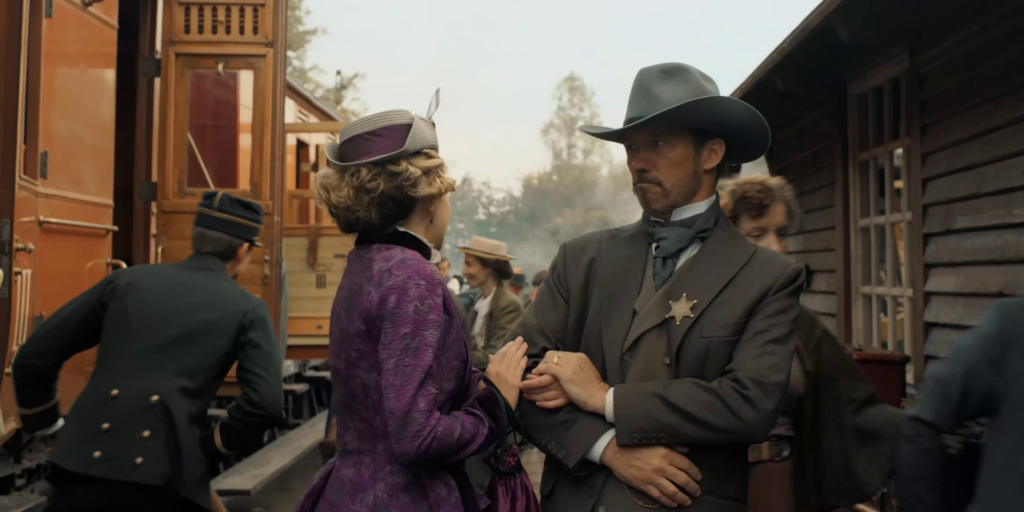
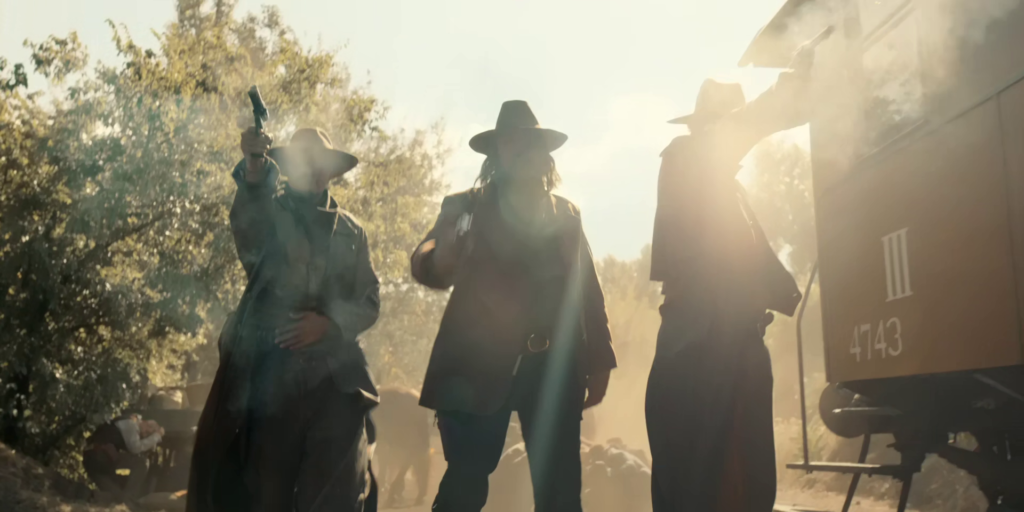
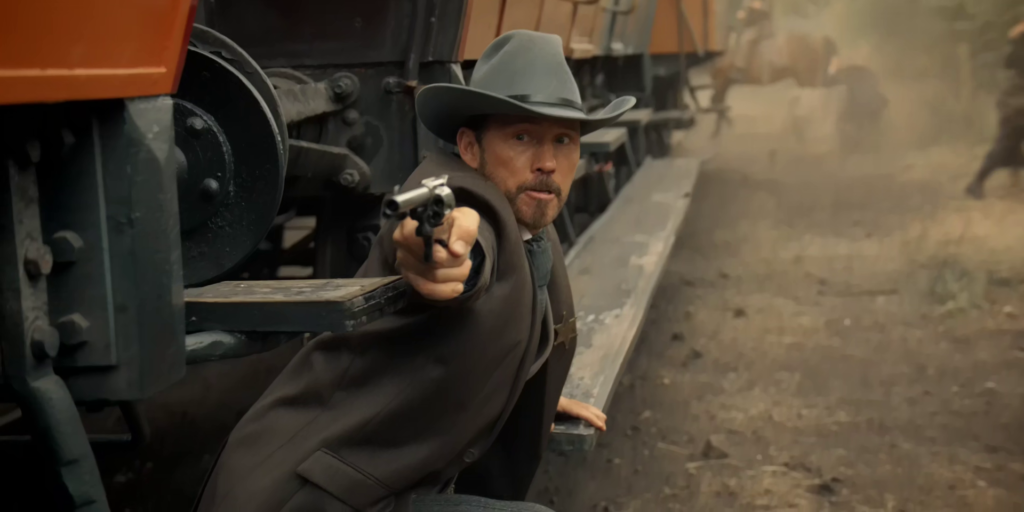
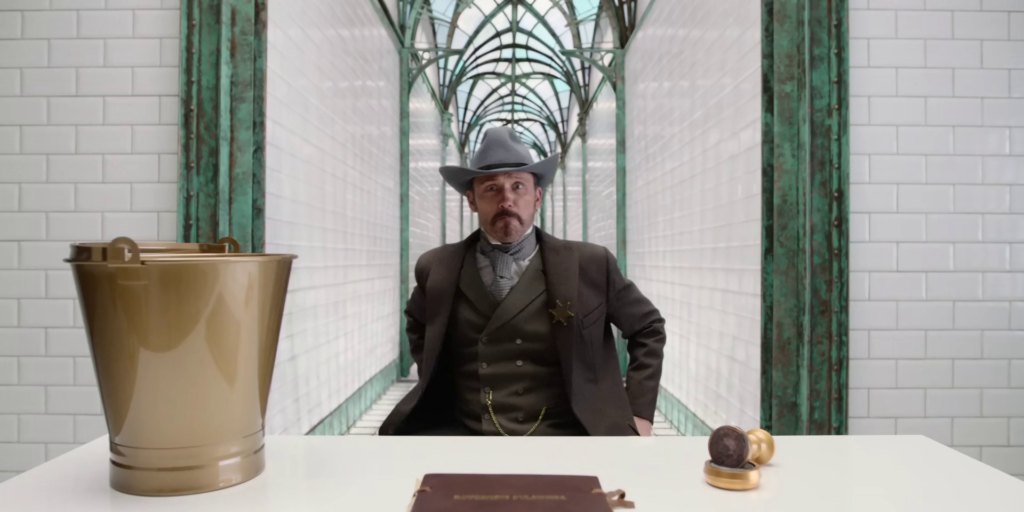
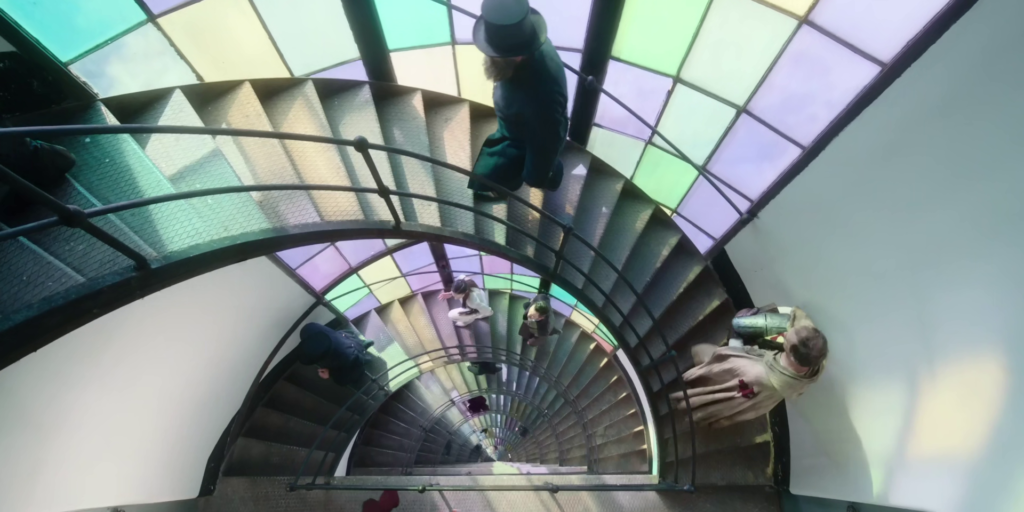
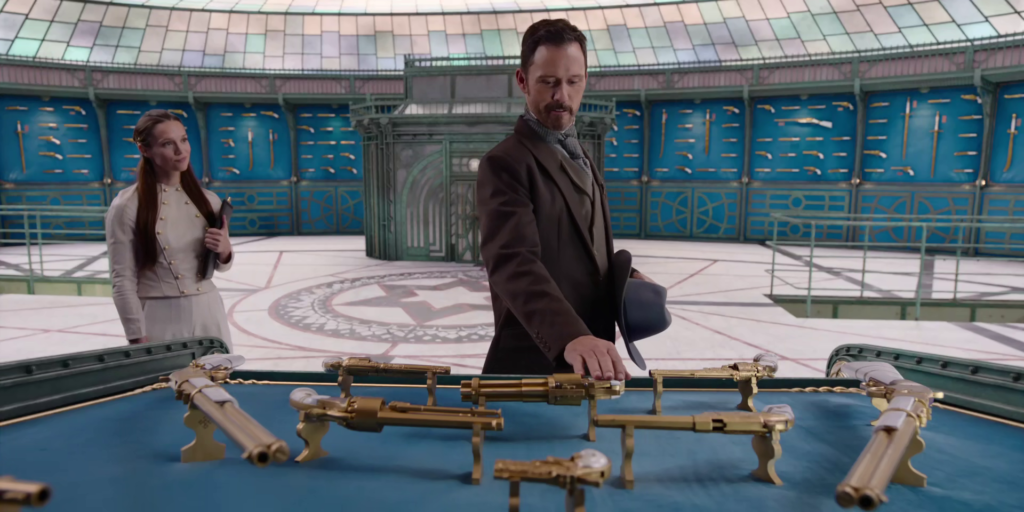
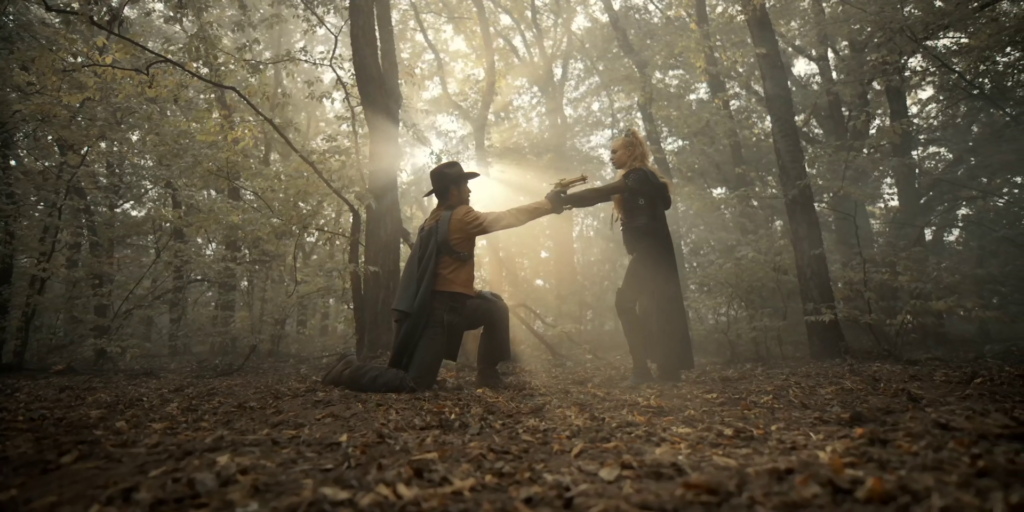
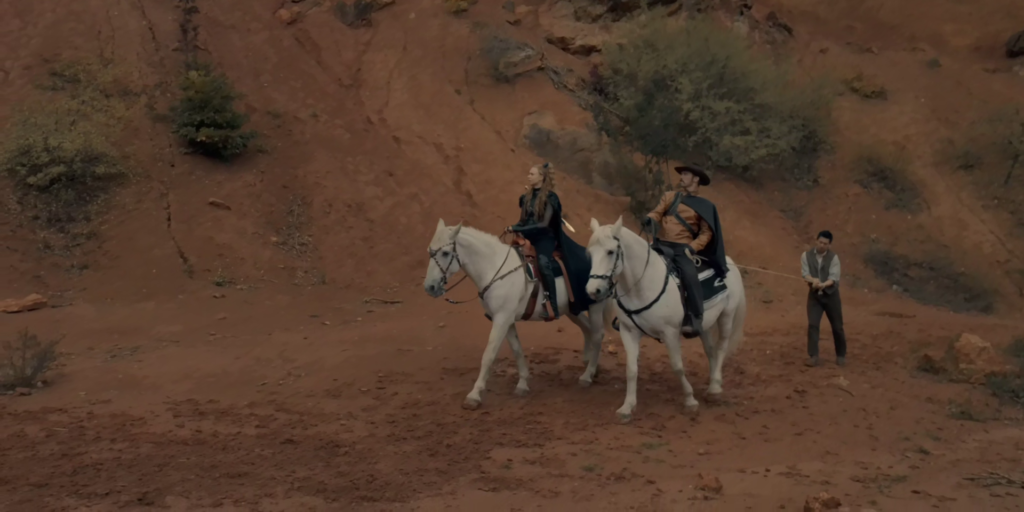
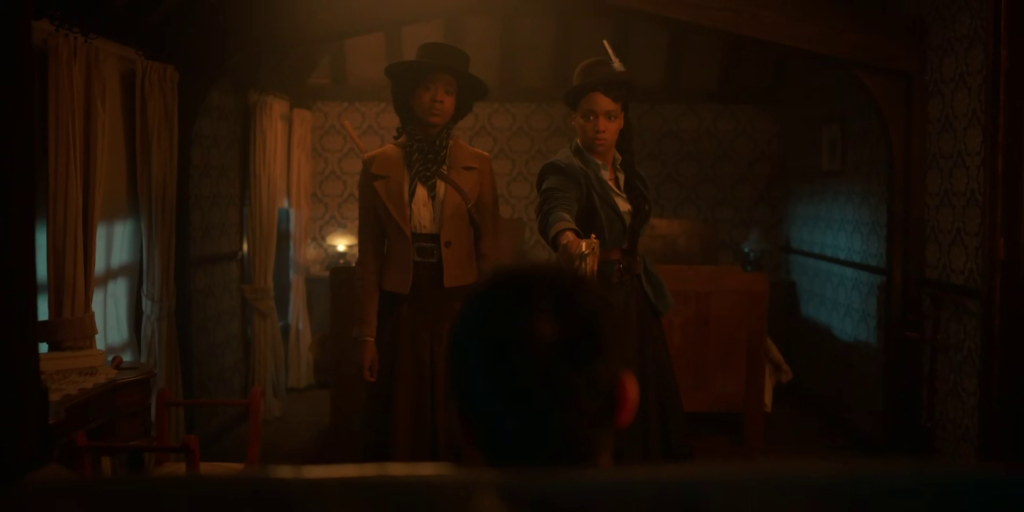
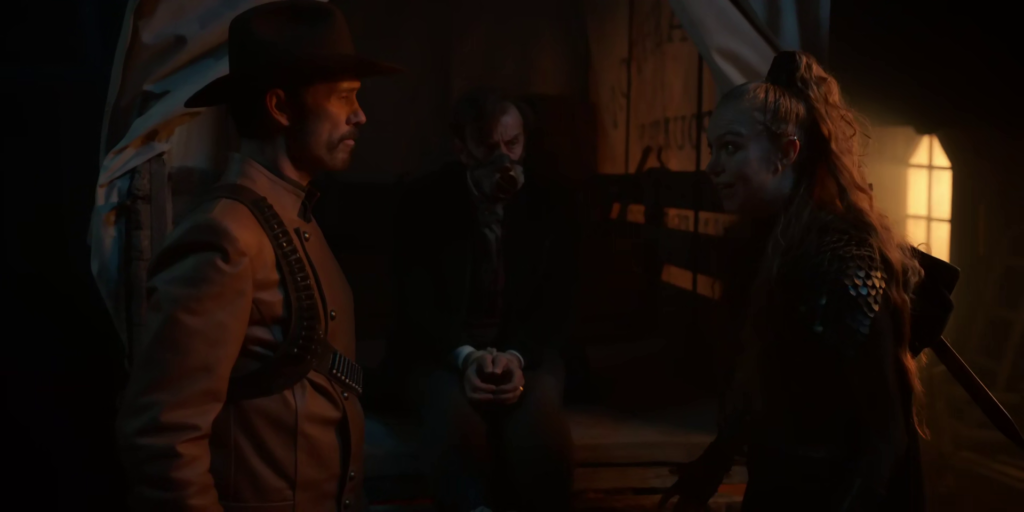
R.I.P.D. 2: Rise of the Damned (2022)
Film review #575
Director: Paul Leyden
SYNOPSIS: Sherriff in the Old West Roeciphus Pulsipher is gunned down and killed in a shootout with some outlaws. Before he can proceed to the after life, he is recruited by the Rest in Peace Department (R.I.P.D.) to hunt down souls that have not departed from the Earth. “Roy” is partnered with veteran officer Jeanne to investigate a disturbance that could put the whole of humanity at risk…
THOUGHTS/ANALYSIS: R.I.P.D. 2: Rise of the Damned is a 2022 film. Despite what the name implies, the film is not a sequel, but a prequel to the 2013 film R.I.P.D., in which we see the story of how veteran officer Roeciphus “Roy” Pulsipher joined the department. The film is set in the Old West, where Roy is killed in a shootout with a local outlaw gang. He is recruited by the Rest in Police Department (R.I.P.D.) to deal with souls called “Deados” who have remained on Earth after death and must be sent to the afterlife. Roy is teamed up with another officer, Jeanne, to investigate an increase in strange activity. If you watched the first film, you’ll know exactly what to expect from this film, because it is basically the same plot: rookie and veteran partner up to stop the souls of the dead from returning to Earth. However, unlike the first film, which was still entertaining by just rushing through the film and relying on constant action and strong character performances, R.I.P.D. 2 doesn’t even have that, and the film stumbles along without any real energy or appeal. It doesn’t expand on the world or the lore in any way, it doesn’t reveal anything new about the characters, it’s just a completely recycled product with all the good stuff thrown out.
The only returning character from the first film is Roy, who was played by Jeff Bridges in the original, is played here by Jeffrey Donovan (obviously Bridges would have been a bit too pricey for this low-budget prequel). While I see a lot of praise for Donovan’s performance, I just didn’t see it. In his defence, it might just be the awful script and writing that is giving him stunted dialogue and interactions, which is certainly feasible, as the characters interact rather clumsily. Jeanne ‘s characters is very much a typical “veteran cop,” and the French accent gives it away that she is meant to be Joan of Arc fairly early, although the film “reveals” it a lot later (although I’m not sure if it is meant to be obvious, because the writing doesn’t indicate it). Despite her being a famous historical figure, it doesn’t fails to add anything to the film or her character. Following the lore of the film, Roy and Joan look completely different to living people so they can’t be recognised, and are given the appearance of two black women. This does present an opportunity for the film to address the racism and status of black people in the Old West, but the film chooses to play it safe and does the bare minimum with it. If they’re not going to address the topic, they might as well just not bothered having it as a plot point at all.
Every establishing shot in the film gives away that everything is a set devoid of substance beyond the camera. The effects are plain, and nothing stands out to make things interesting. The ending wraps things up in a roundabout way and addresses issues that I didn’t realise were an issue (who actually shot Roy or something). Overall, you’re not going to get anything out of this film that the original, and is far inferior in every way. Everything about the film feels cheap and uninspired, and the things that made the original entertaining are absent. Releasing ten years after the original as well means that the opportunity to ride the hype of its predecessor is long gone, leaving it alone and essentially dead on arrival.
-
#574 – R.I.P.D. (2013)
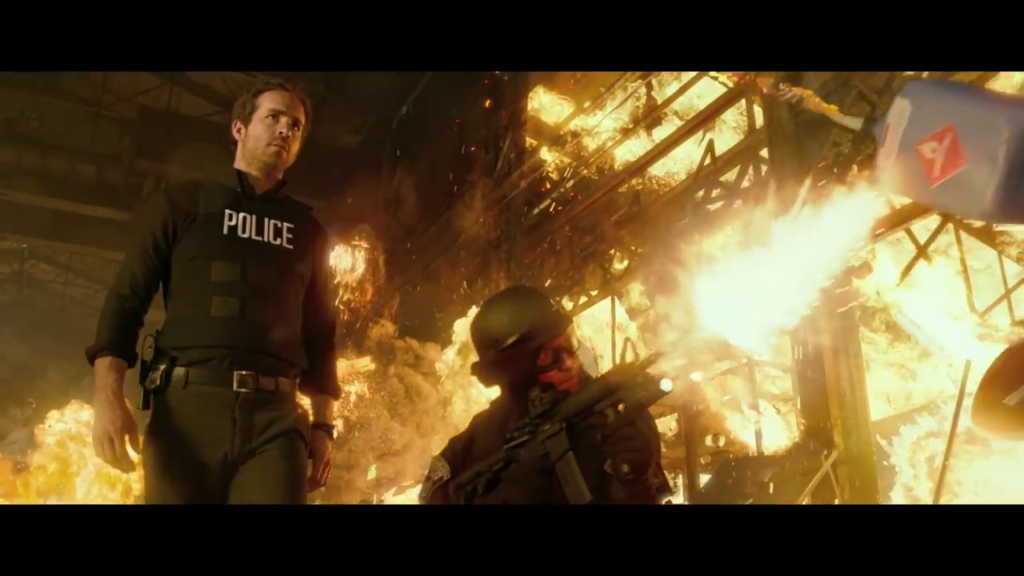
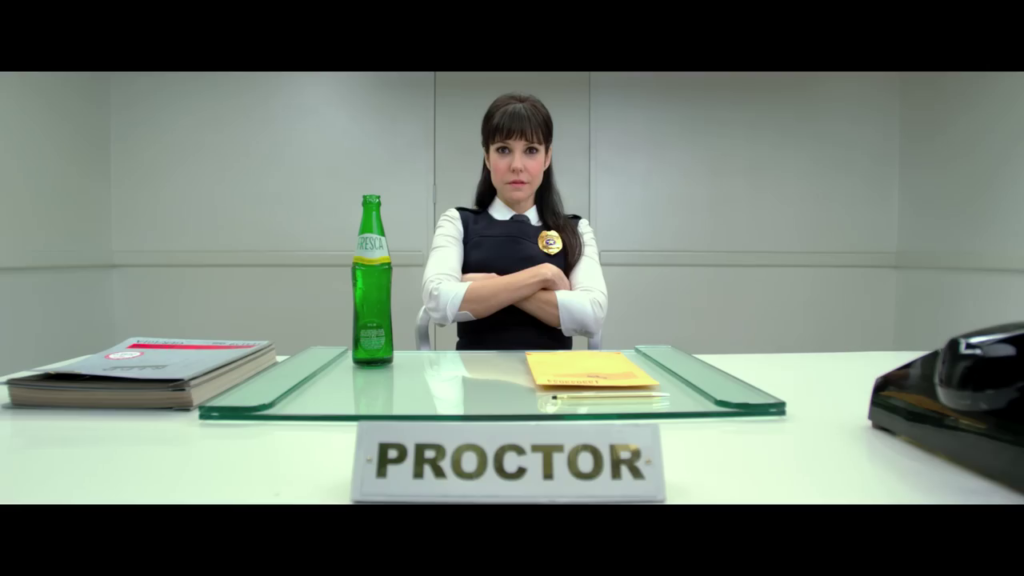
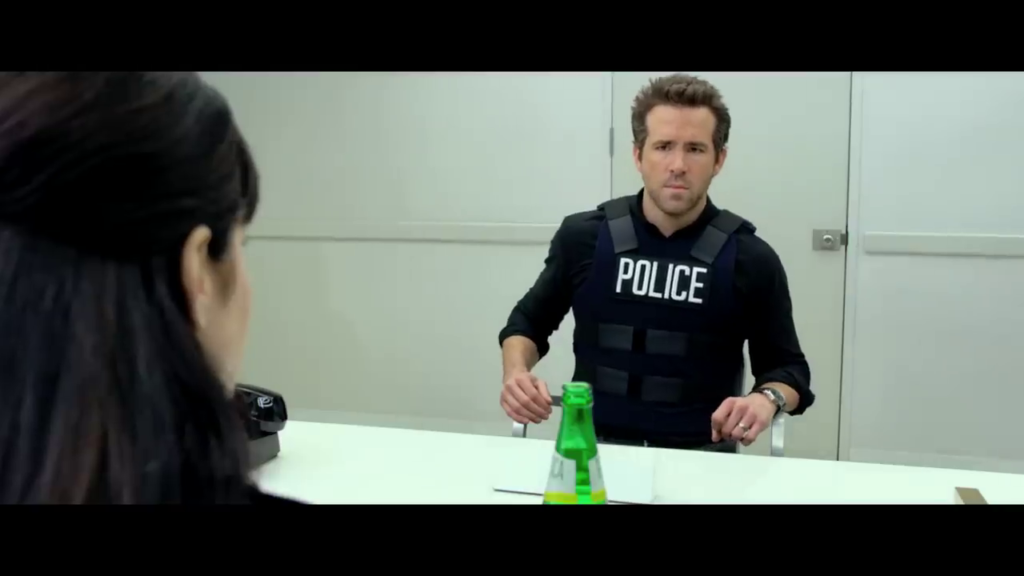
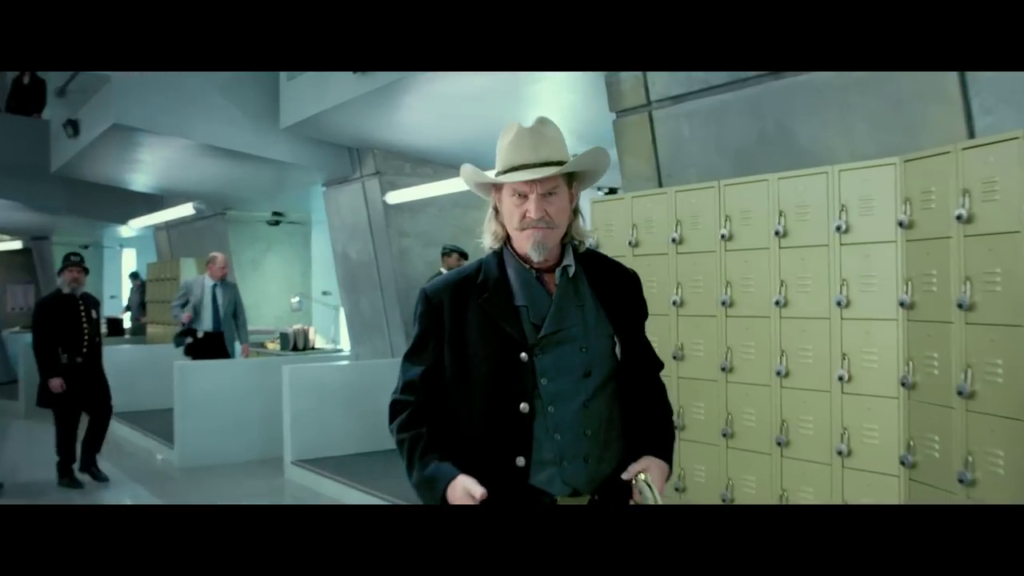
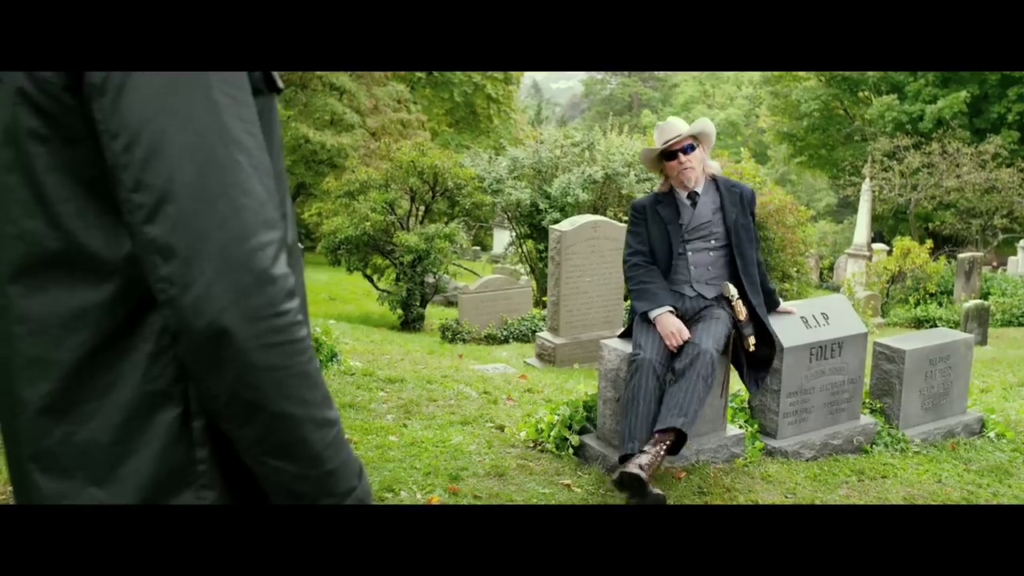
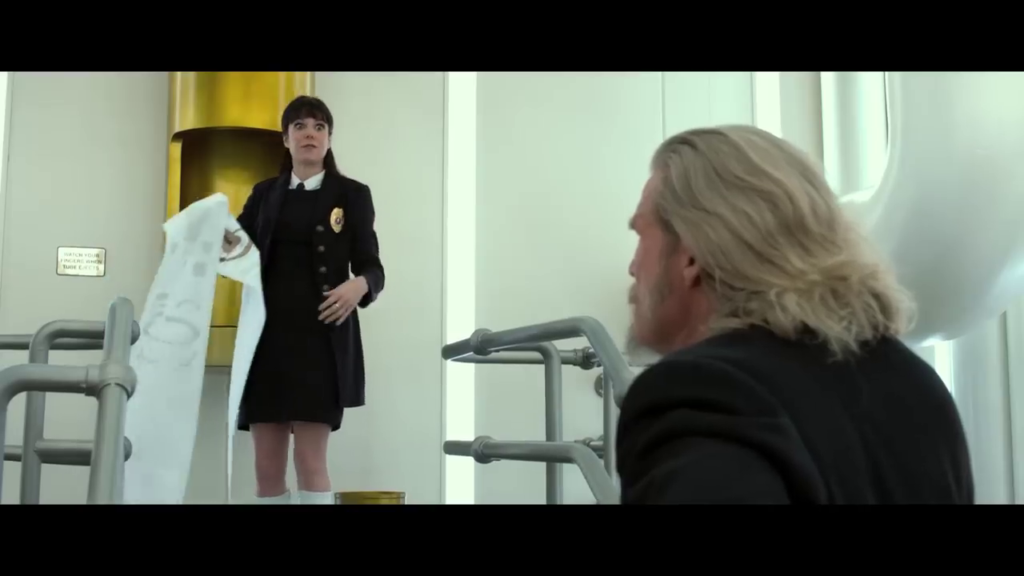
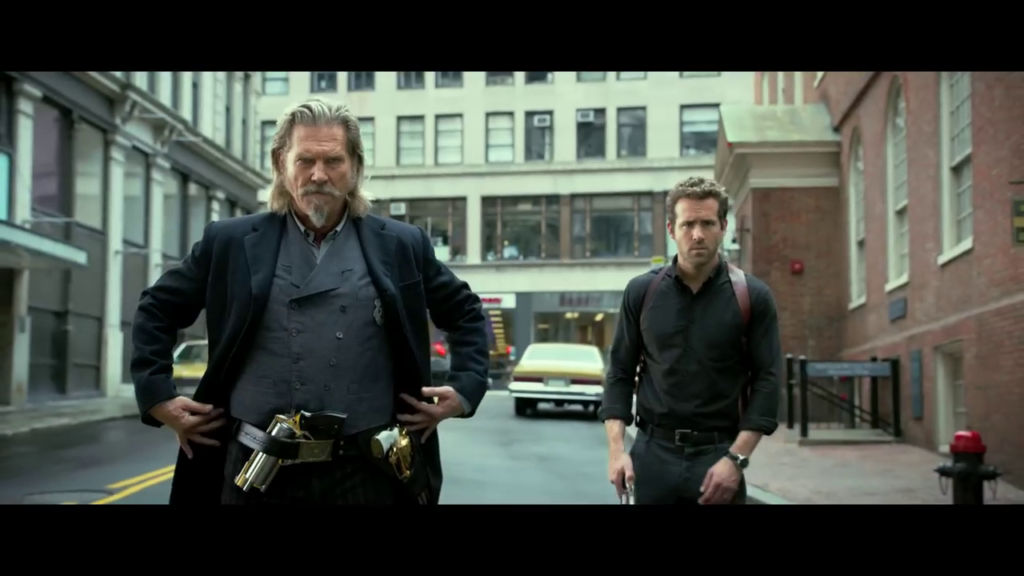
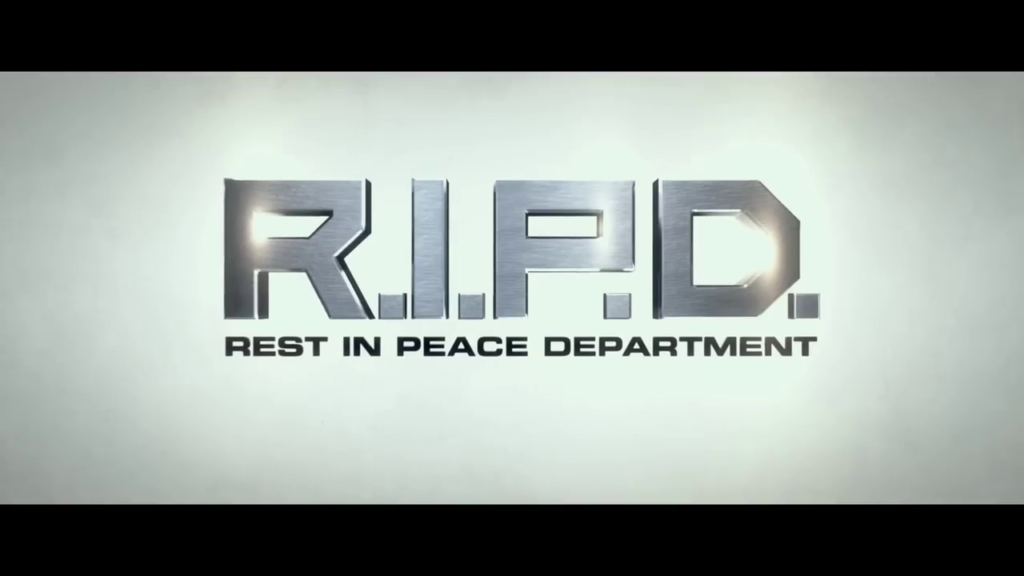
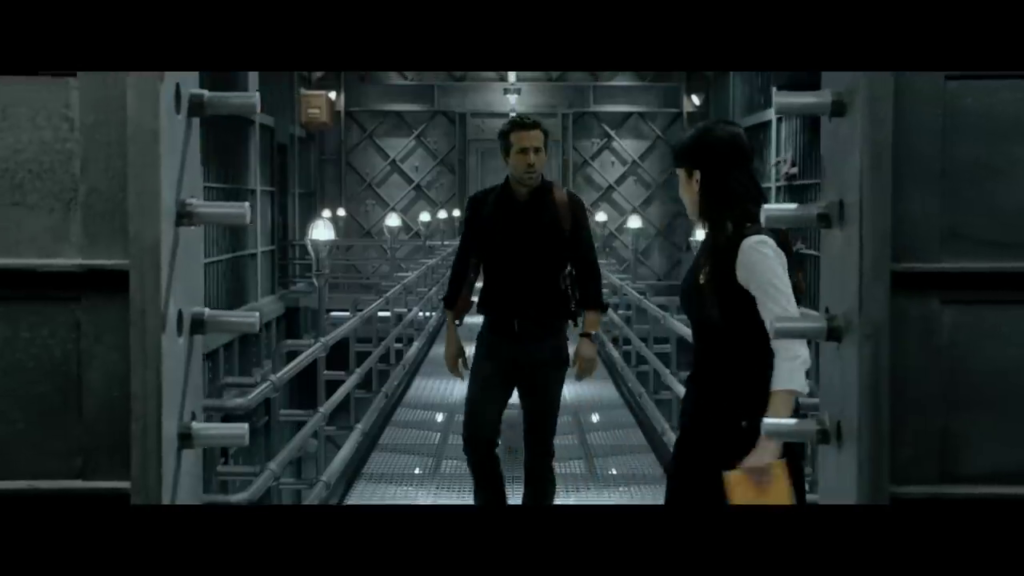
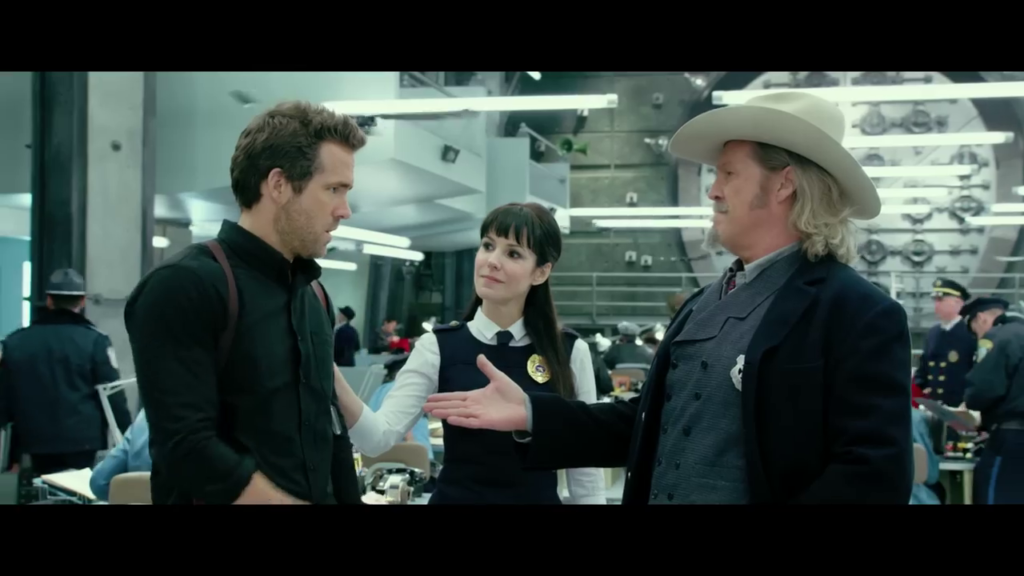
R.I.P.D. (2013)
Film review #574
Director: Robert Schwentke
SYNOPSIS: Police officer Nick Walker is killed by his partner Bobby Hayes as he wants to get rid of some gold that the two found on a random drug bust. He finds himself recruited into the R.I.P.D.: The “Rest in Peace Department,” which is a supernatural force whose purpose is to hunt down people that have died and still roaming the Earth. Partnered with a veteran officer, the two discover the circumstances behind Nick’s death are tied to a much bigger plot…
THOUGHTS/ANALYSIS: R.I.P.D. is a sci-fi action film based on the comic book of the same name. The film opens up with police officers Nick Walker (Reynolds) and Bobby Hayes (Bacon) are discussing some gold they took on a random drug bust, but kept it for themselves. Nick decides he is going to turn the gold into evidence, and Bobby decides to kill Nick at their next drug bust when no one else is around. Nick finds himself dead, but before he is whisked away to the afterlife, he is brought to the R.I.P.D. to be recruited as an officer who specialises in thwarting people who have died and are still hanging around Earth, causing them to transform into hideous creatures called “Deados.” Nick is partnered with veteran officer Roicephus “Roy” Pulsipher, who was a sheriff in the Old West before he died, and the two manage to stumble upon a plot that threatens the whole world, which they naturally have to put a stop to. The story can very easily be summed up as a combination of the films Men in Black and Ghost: you can see certain scenes are almost complete cut-and-paste jobs from these two. Alongside this, it doesn’t have either the worldbuilding or quickfire comedy of Men in Black, nor the emotional depth of Ghost, leaving a film that just completely fails to build its own identity. The plot of an ancient artifact being built that will wipe out the Earth is basically the plot to every Men in Black film. It feels like the script was just finished at it’s first draft, and no one bothered to add in any specific details or worldbuilding to give it some depth. Despite the criticisms, the film actually does a good job of avoiding any boring exposition, and just jumps right into everything and explaining things as it goes. Part of this might be because there’s not much to actually explain, but at least the film manages to keep momentum going over the rather short runtime of just over ninety minutes.
The characters are very much what you would expect: Ryan Reynolds is Ryan Reynolds: it doesn’t matter what the name of the actual character, because he’s just playing the same character he always does. Jeff Bridges playing Old West lawman Roeciphus “Roy” Pulsipher is certainly the stand out performance. Again, he’s not got much depth beyond being the “grizzled veteran” type, but it’s guaranteed fun every time he is on screen. Kevin Bacon as the villain is unremarkable, and Nick’s wife Julia barely leaves a mark. As mentioned, the film lacks and seems to avoid the emotional depth that would have made their relationship and the significance of Nick’s death a solid plot point. Even if it was, it wouldn’t have been any different from the plot of Ghost (again, as mentioned). The film doesn’t seem to know what it wants its audience to be: it doesn’t have the established jokes and wit to be a comedy movie for young adults, the lack of emotional drama for older adults, and is a bit too adult for younger viewers, so the film just rushes straight through the middle with nothing sticking to it.
It’s difficult to find something else to say about the film, because there’s not much content to comment on. The film was blasted for being derivative of other films and a box office bomb, making nowhere near its budget upon release. However, I don’t think it’s all bad: sure, it has no substance, but it’s paced well, and maintains its momentum and energy through to make it a pretty entertaining film with no lulls. R.I.P.D. is the epitome of mindless cinematic entertainment that brings nothing new or significant to the table, but a short bit of fun if you’re in the mood.
-
#573 – Moonfall (2022)
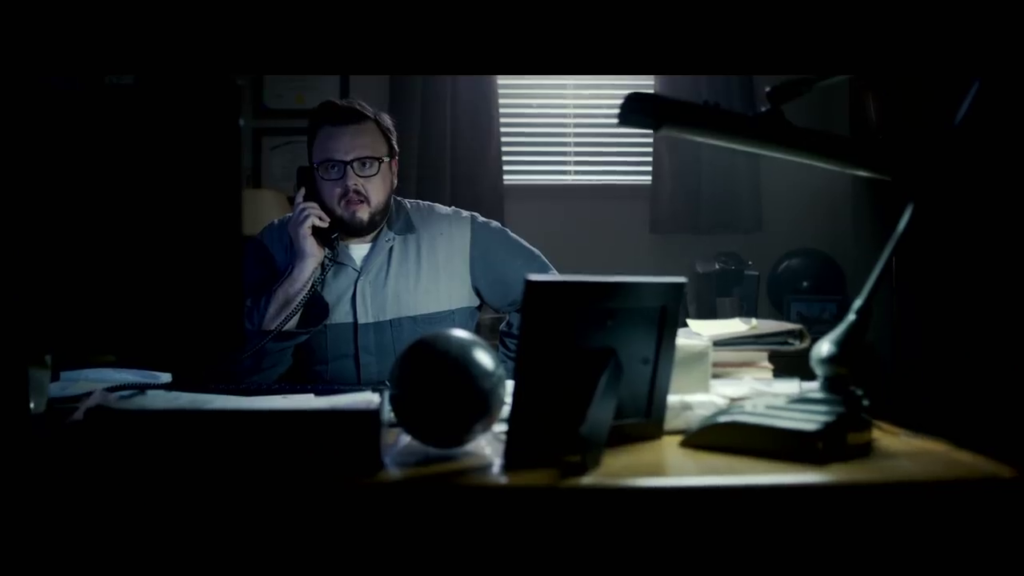
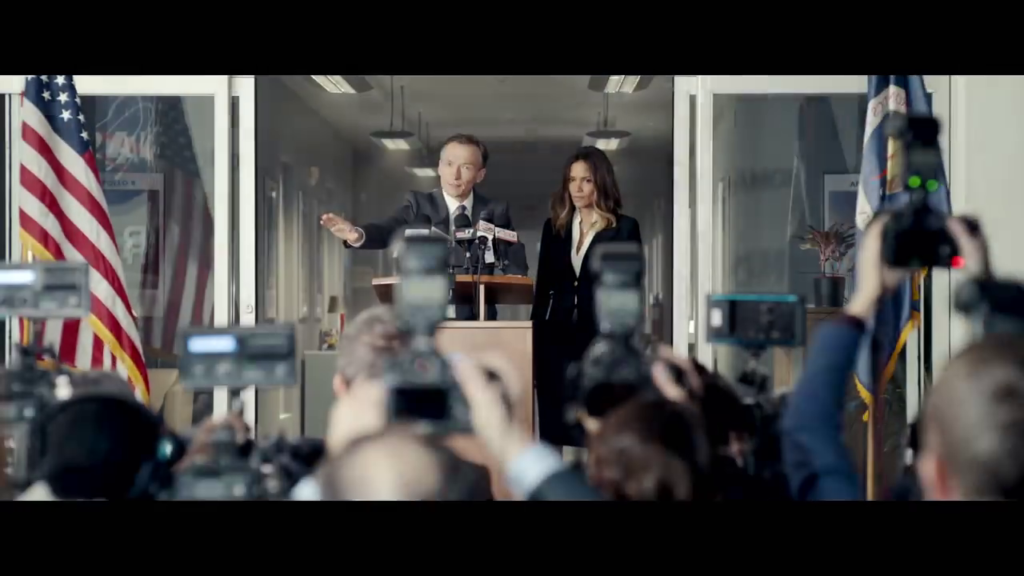
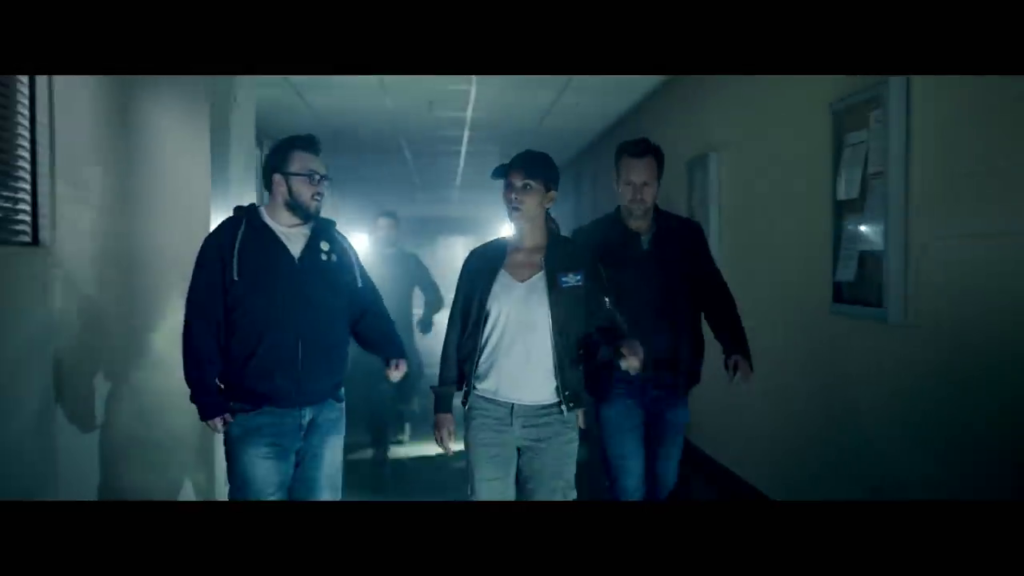
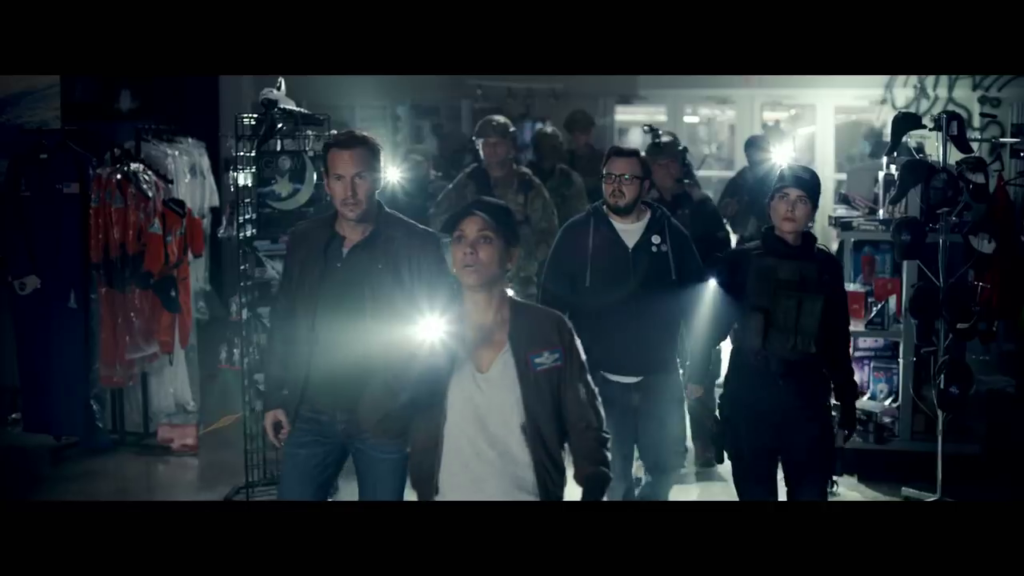
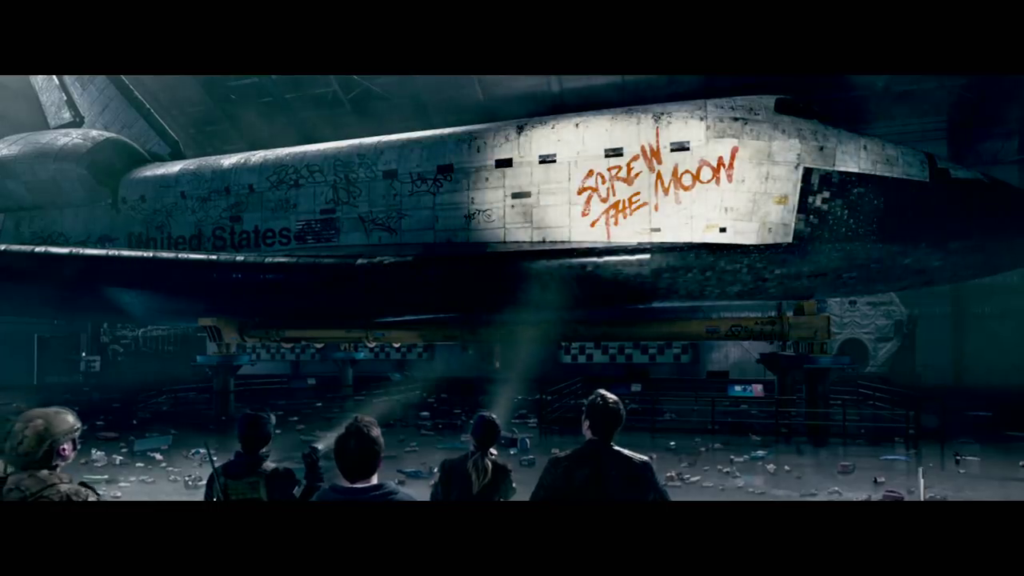
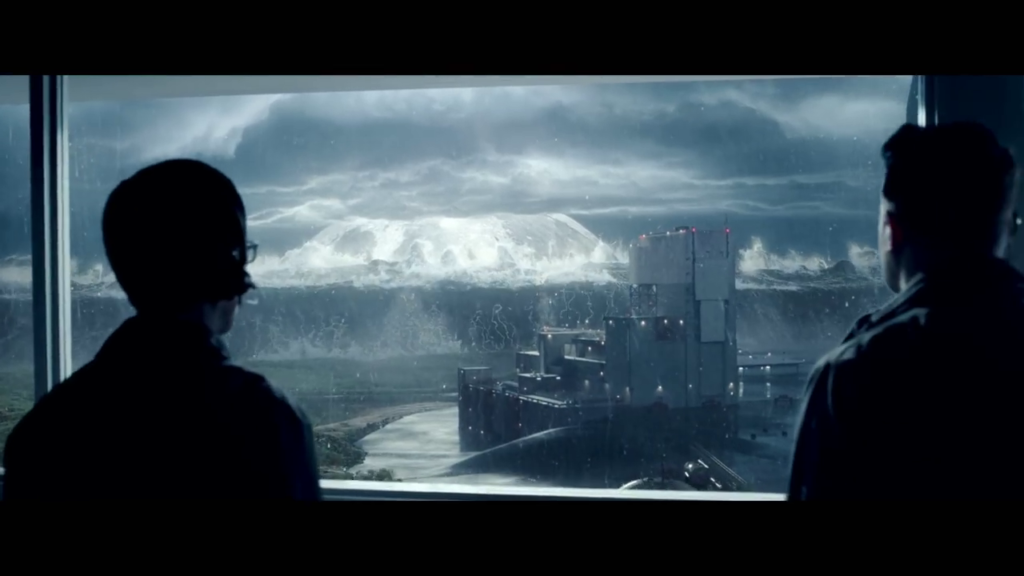
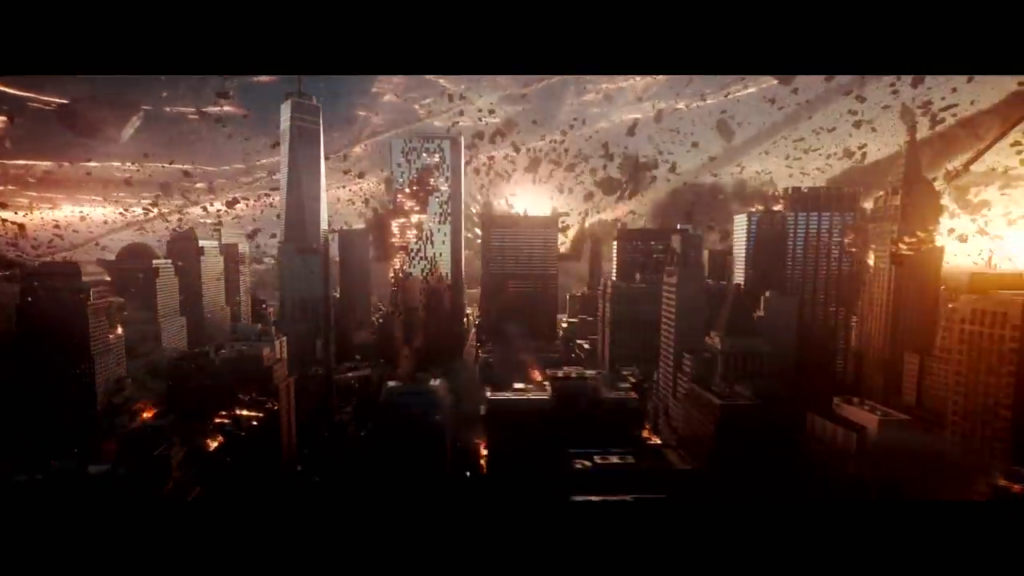
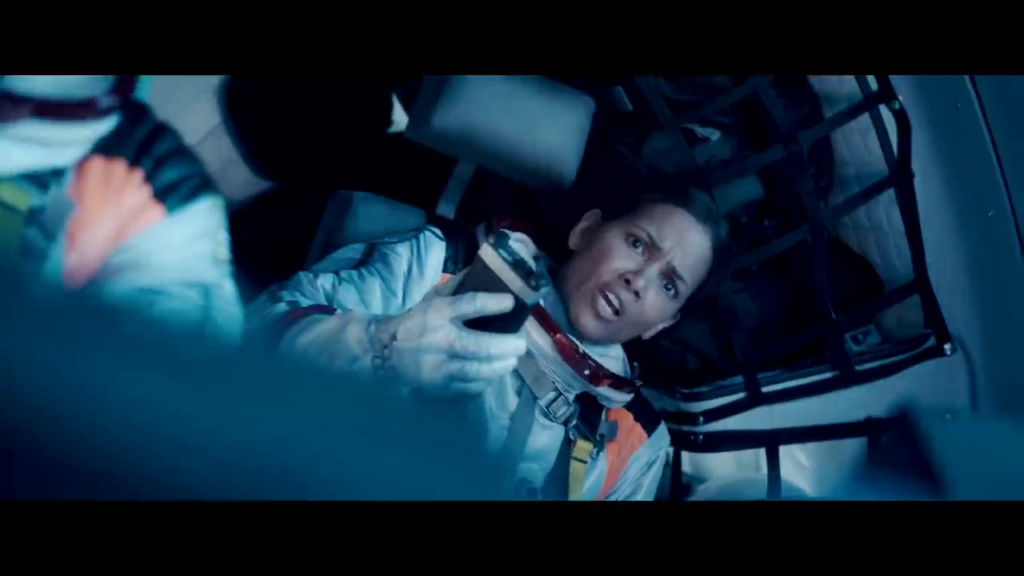
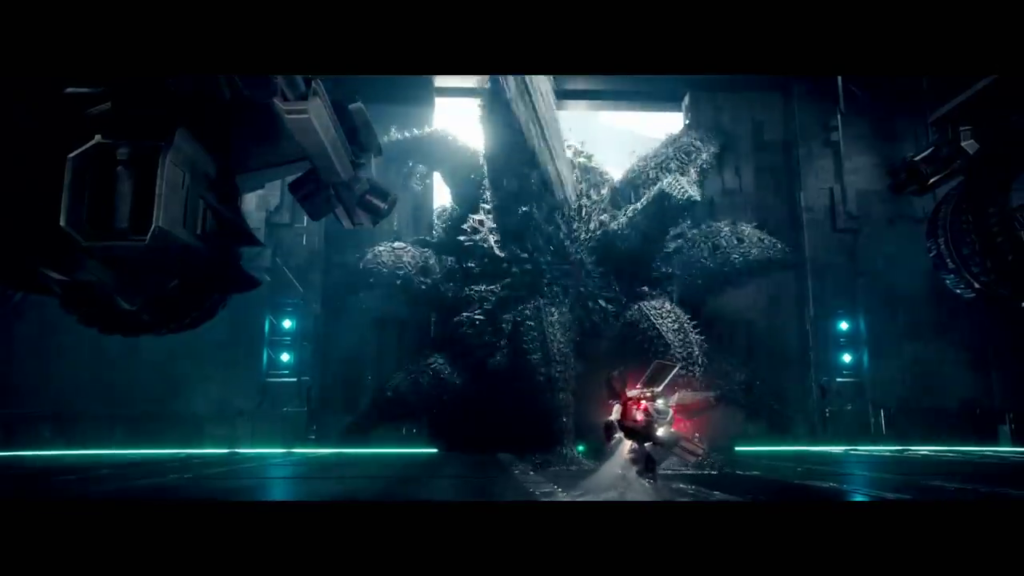

Moonfall (2022)
Film review #573
Director: Roland Emmerich
SYNOPSIS: K.C. Houseman, a conspiracy theorist, uses a research telescope to confirm his suspicions that the moon’s orbit is changing and moving closer to Earth, and will eventually collide with it. NASA eventually confirm the findings and mass panic ensues. They send a rocket up to the moon to investigate, but the shuttle is attacked by a mysterious entity. Brian, an astronaut who was fired in disgrace after a space mission he was on was similarly attacked and no one believed him, leaving his reputation destroyed, is now tasked with one more mission to try and stop the moon from destroying the Earth…
THOUGHTS/ANALYSIS: Moonfall is a 2022 sci-fi disaster film. The plot, unsurprisingly, revolves around the moon falling to Earth. Conspiracy theorist K.C. Houseman, who believes that the moon is a artificial superstructure, and its orbit is decaying. It turns out he is right, and when NASA confirms it, mass panic sets in across the world. A shuttle mission to investigate the moon is attacked by a strange entity, and destroyed. It turns out to be the same entity former astronaut Brian Harper claimed attacked his mission ten years before, but as no one believed him, and was sacked and his reputation tarnished. His former crewmate Jocinda Fowler, who is now deputy director of NASA, recruits him to lead one more mission to the moon to try and correct the moon’s orbit before it collides with the Earth. The film is quite simply a combination of the films Armageddon and Independence Day. In fact, the director Roland Emmerich also directed the latter, so I’m pretty sure it was deliberate. The realism of a disaster film just doesn’t work well with the plot about aliens and rogue AI and whatnot, and a lot of stuff is just skimmed over. A lot of the plot points make very little sense, such as why the A.I….thing would just hide in the moon and try to bring it down, rather than attack the planet directly if that it was aiming to do. There doesn’t feel like there’s much of an attempt for the film to carve out its own identity, rather just picking bits from what previous films have done successfully. Then again, the sheer cheesiness of the plot and setups might make for mindless, entertaining viewing, but it’s definitely hard to take it seriously.
The characters are all fairly cookie-cutter with nothing really distinguishable. Brian and Jocinda are just very standard lead roles, and K.C. Houseman provides the comic relief with one-liners that aren’t memorable or really funny. The trailer for the film has him respond with a quip after every scene or serious moment without rest, and while it’s okay to lighten the mood once in a while, doing this constantly really stops the suspense and story dead in its tracks. The characters also have their own families who are trying to get to safety, providing a perspective from “ordinary” people on the disaster that is unfolding: again, just like Independence Day. None of these characters stand out in particular, and their scenes feel like they’re there to pad out the runtime. With the film coming in over two hours and ten minutes, the film definitely feels padded.
When the mission makes it to the inside of the Moon, they discover the inside is a Dyson Sphere: a man made structure with a white dwarf star housed inside to power it. We are also treated to a lengthy exposition about how humans once existed on another planet but were destroyed by a rogue A.I., so these superstructures were sent to potential habitable planets to populate them with the DNA of human life, but the A.I. thing (I don’t really know what it is) has now found Earth and is causing the moon to fall to destroy the humans. It’s nothing you haven’t heard or seen before, and lumping in all this stuff near the end does detract from the disaster theme a little. The ending feels like it’s very much on auto-pilot, as Brian encounters a “good A.I.” or something, and somehow now knows how to pilot around the superstructure to destroy the bad A.I., which ruins any kind of tension in the climax. In terms of effects and CG, it’s actually not too bad: you get a good sense of the scale of destruction in the landscape shots, but the effects of the Moon’s effect on gravity is entirely inconsistent throughout, and it can mostly be explained away as it’s for the purpose of the plot. Anyway, Moonfall is a mash-up of what you’ve seen before, with Roland Emmerich doing exactly what you expect in producing an over-the-top disaster film with a very typical cast of characters. It’s plot is all over the place, and is completely implausible most of the time. It is a brainless, cheesy sci-fi film that may serve as a silly ride that might entertain, but you’re going to struggle to believe anything in the movie is plausible.
-
#572 – Crater (2023)
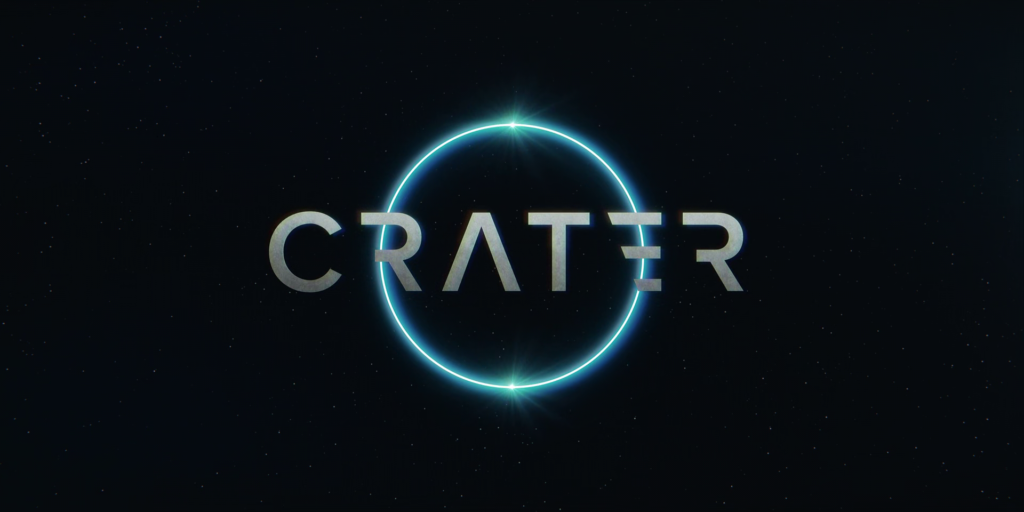
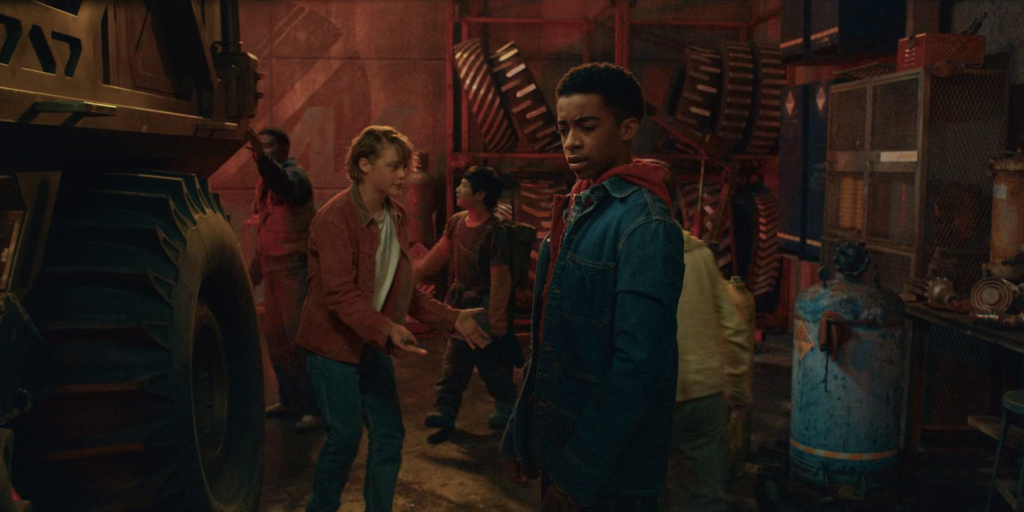
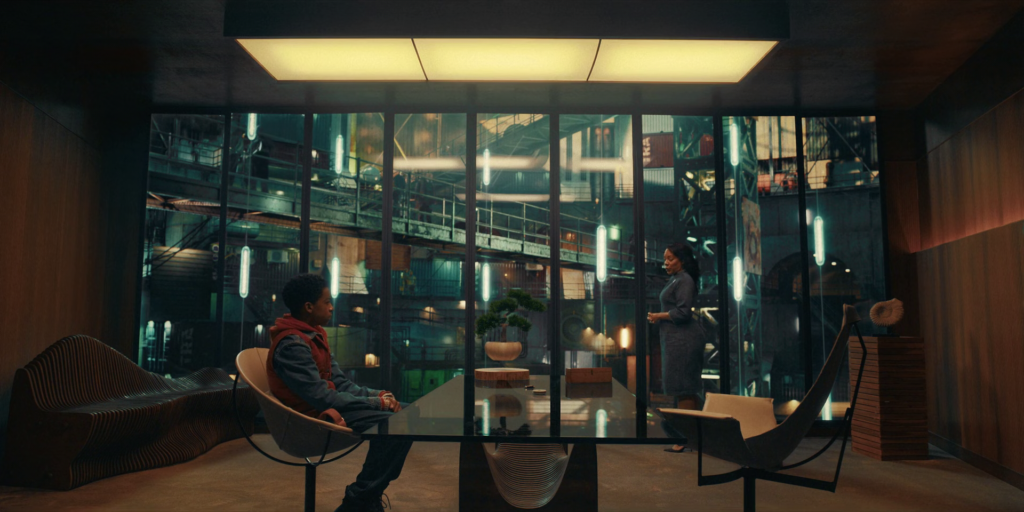
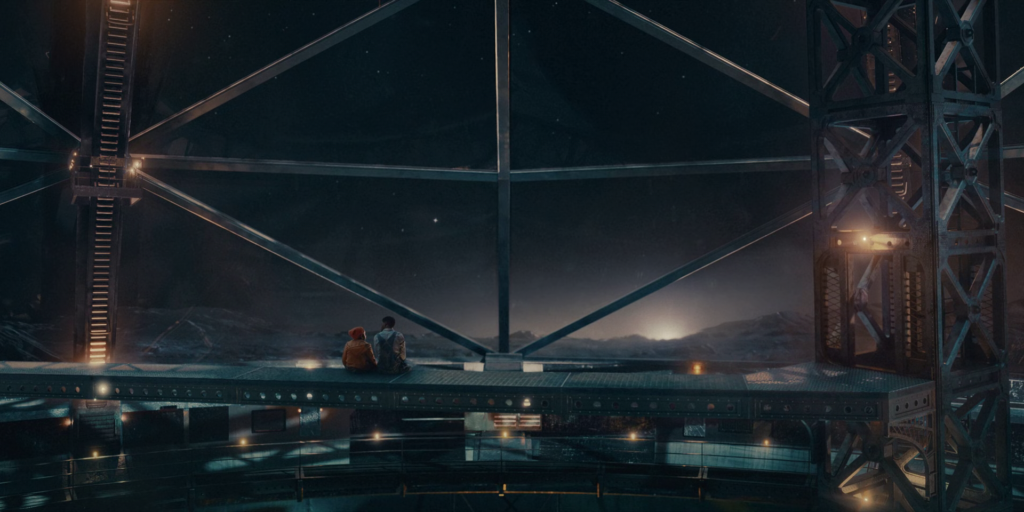
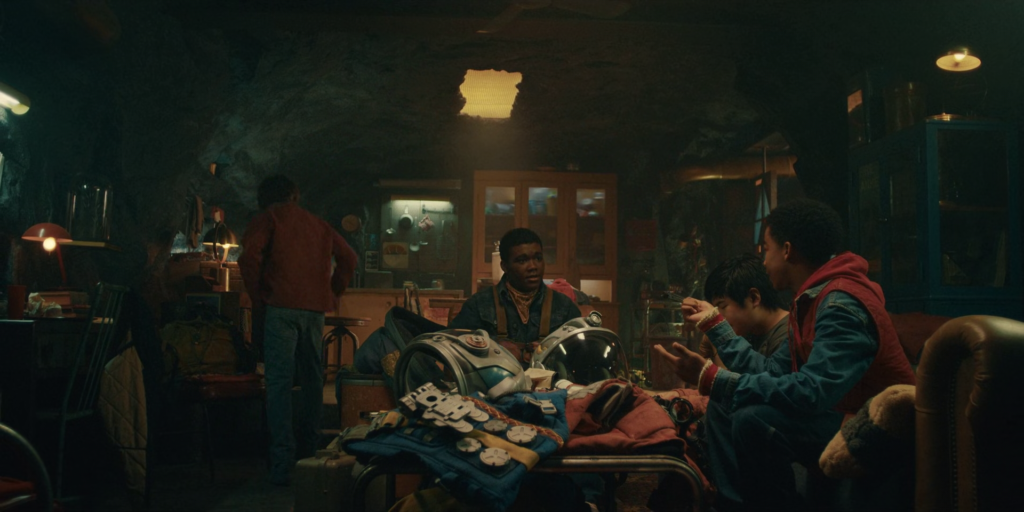
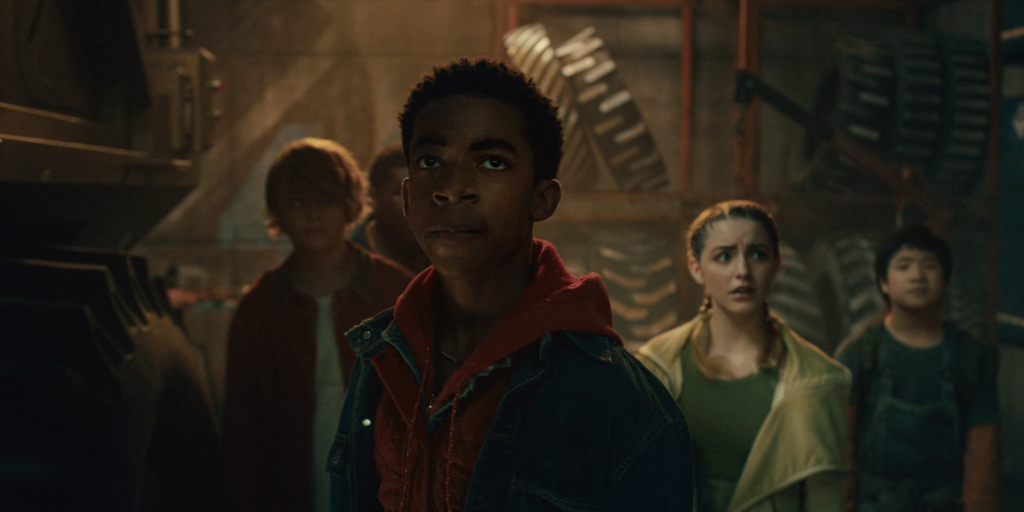
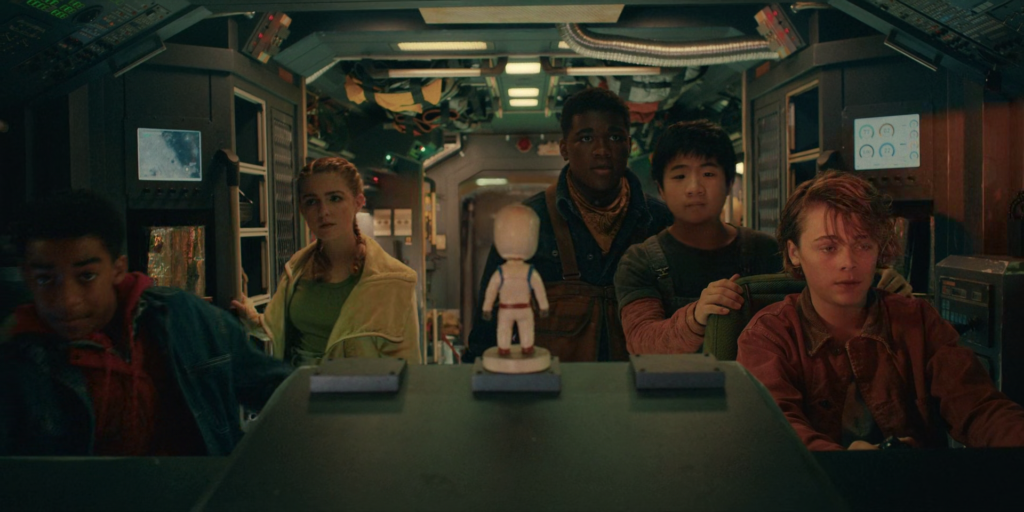
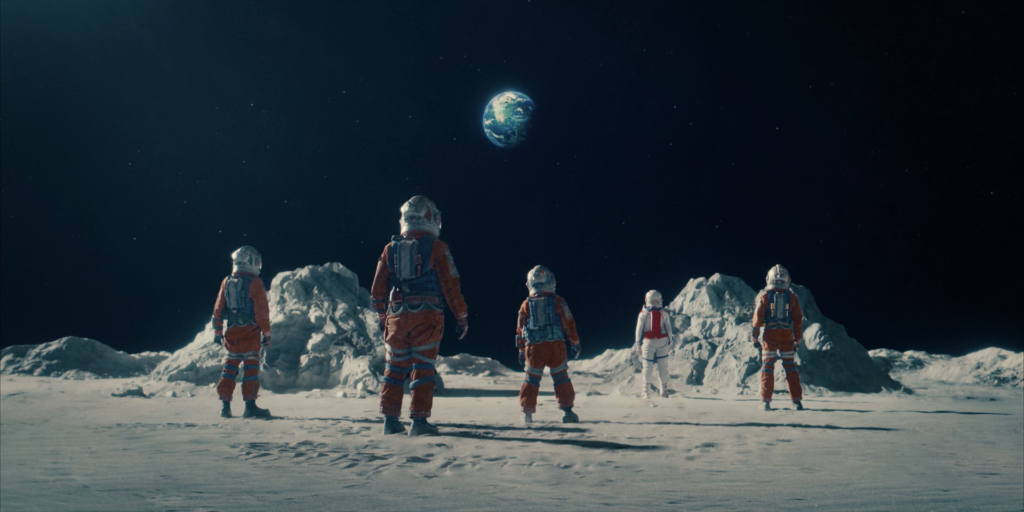
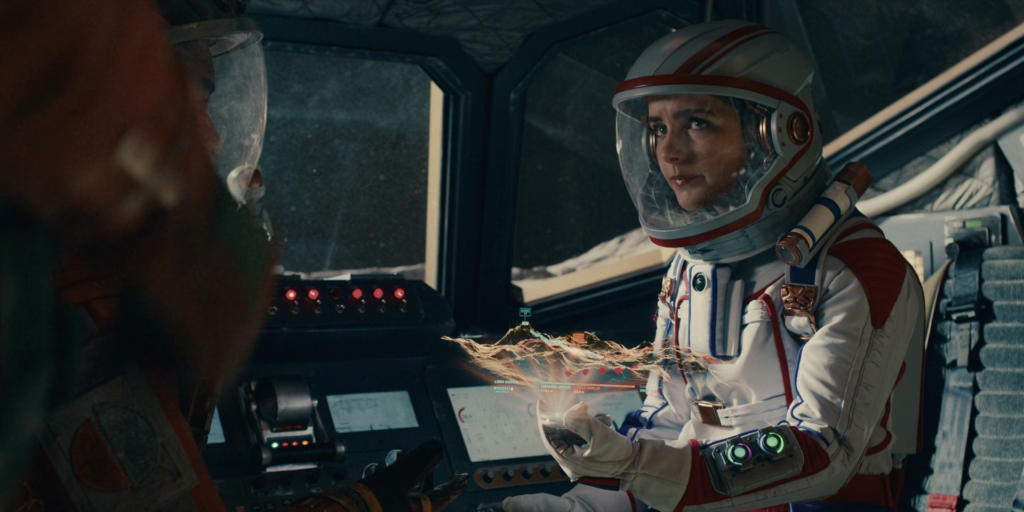
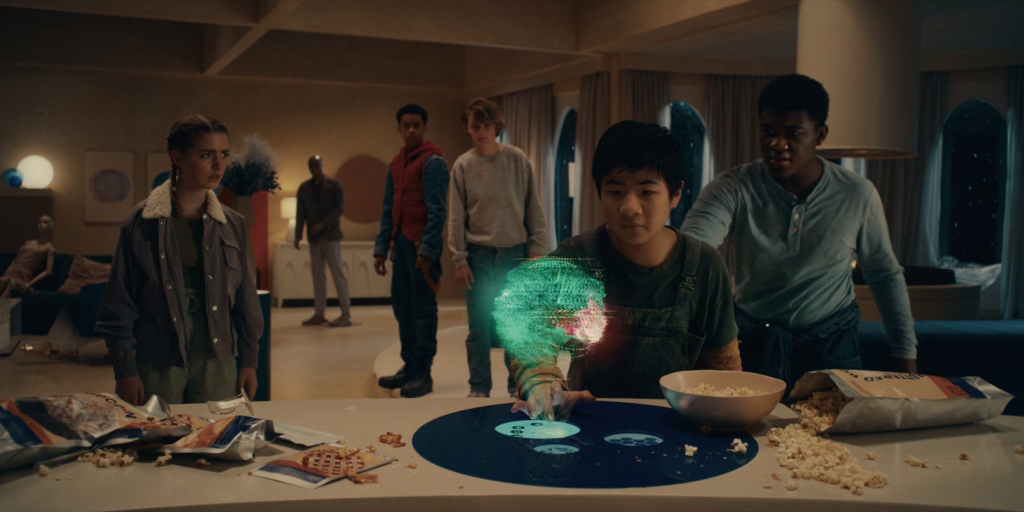
Crater (2023)
Film review #572
Director: Kyle Patrick Alvarez
SYNOPSIS: In a mining colony on the moon, Caleb Channing is about to be shipped to the new colony of Omega, after his Father dies in a mining accident, and he is allowed to go. However, this means leaving his friends behind, which he does not want to do. Caleb also wants to fulfil his Dad’s last wish and go to a crater outside of the colony, so they decide to steal a lunar rover and head out on a road trip across the moon…
THOUGHTS/ANALYSIS: Crater is a 2023 sci-film. The film takes place in 2257 on a mining colony on the Moon, where teenager Caleb Channing is about to be transported to the colony planet Omega, after his Father died in an accident and as a result his family is allowed to take the seventy five year trip in cryostasis to reach the new planet. However, Caleb doesn’t want to go and leave his friends behind. Alongside this, his father told him his dying wish was for him to visit a crater outside of the colony on the lunar surface to see something. To this end, Caleb and his friends plan to steal a lunar rover and travel outside the colony to see the crater before he has to go away forever. The film is a sci-fi twist on the classic teen coming of age adventure, such as The Goonies and Stand by Me. It follows the formula well, and has all the necessary beats to fulfil it’s objective. The sci-fi setting gives it an interesting twist, although at it’s core it focuses on the characters and their adventure: the setting is simple enough to understand and follow, and doesn’t interfere with that. There’s a lot of convenient coincidences that make everything possible, such as a meteor shower happening when they are planning to escape so that means no one can go after them, but you can overlook that for the most part. There’s times where the film feels a bit too on-the-rails for an adventure, as it doesn’t have the capacity to deviate too much from it’s destination (being in a lunar rover, they can’t really just wander off and find anything new on the Moon), and the flashback narration from Caleb’s dad sometimes is a bit overbearing in hammering home what this trip is supposed to be does seem to be a bit counterproductive in celebrating these kid’s freedom, but is not a huge problem, and the film stands on it’s own for the most part.
The cast of Caleb and his friends are diverse and interesting enough, and give strong performances throughout, which creates a good connection between the characters. Each of them has their own issues and outlooks that bring something to the trip, and there’s some conflict between the characters, but it’s very minimal. We don’t learn everything about the characters, and that’s fine, because we’re just enjoying this journey with them. There’s a message about environmentalism and worker’s rights that runs throughout the film, but it keeps it subtle, letting it play off a little more in the finale when the journey is over. The ending is a jump, but one that doesn’t diminish or write off the impact of what it does, and gives just enough to keep things hopeful.
The film looks pretty good, with a consistent sci-fi aesthetic that feels used and worn, without it looking too cheap or hokey. The CG isn’t top notch, but again, that’s just a small thing you can overlook. All in all, Crater is a decent adventure that takes it’s subject matter seriously, although this might be a bit too serious for it’s target audience. The adventure is fun and easy to follow, the performances are pretty good, and while there are some issues with the film, they are mostly easily overlooked, and don’t detract from the experience.
-
#571 – Jason X (2001)

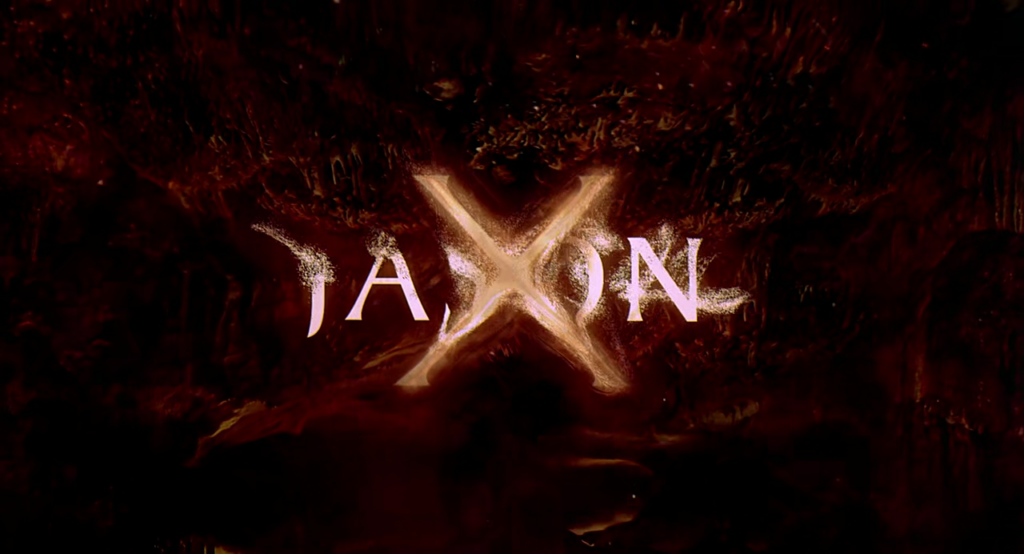
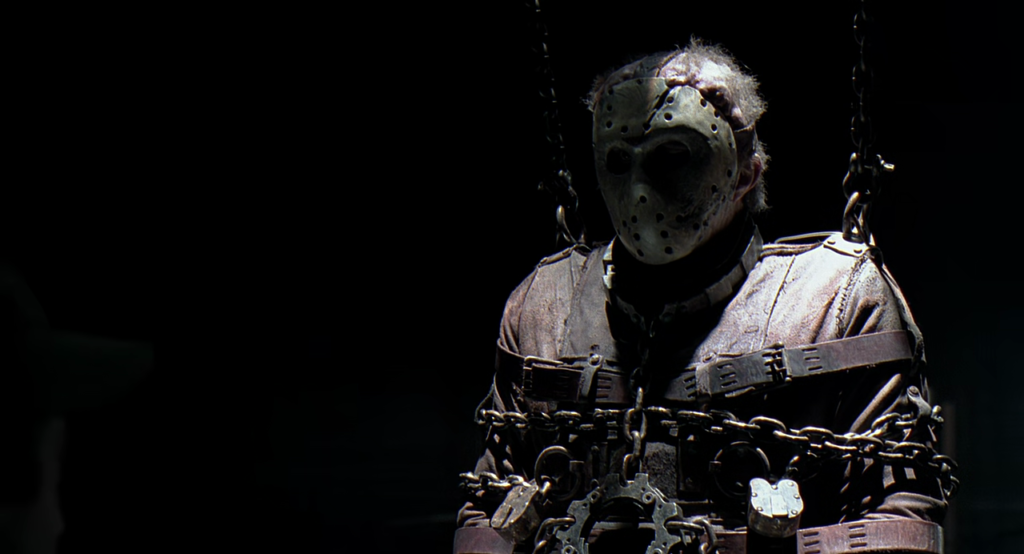
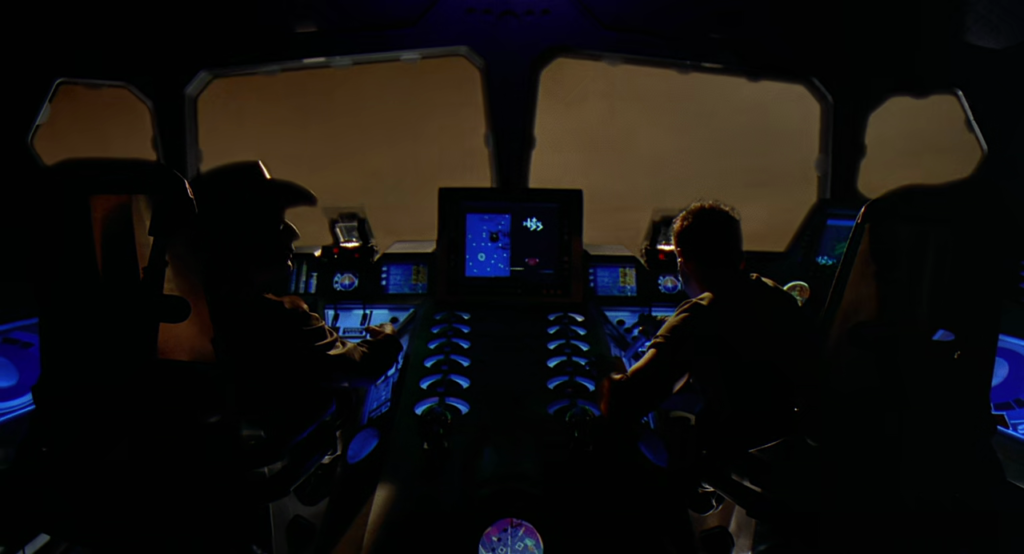
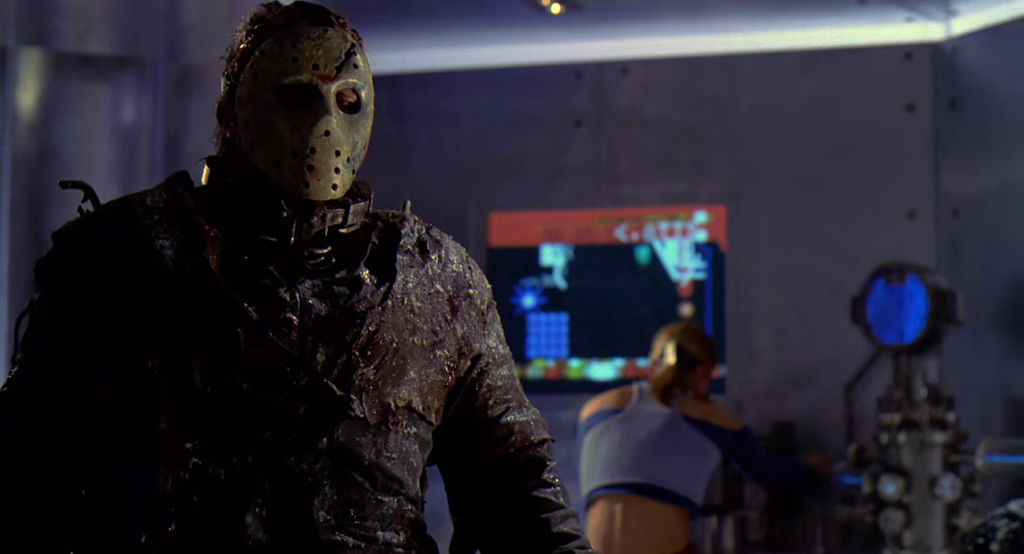
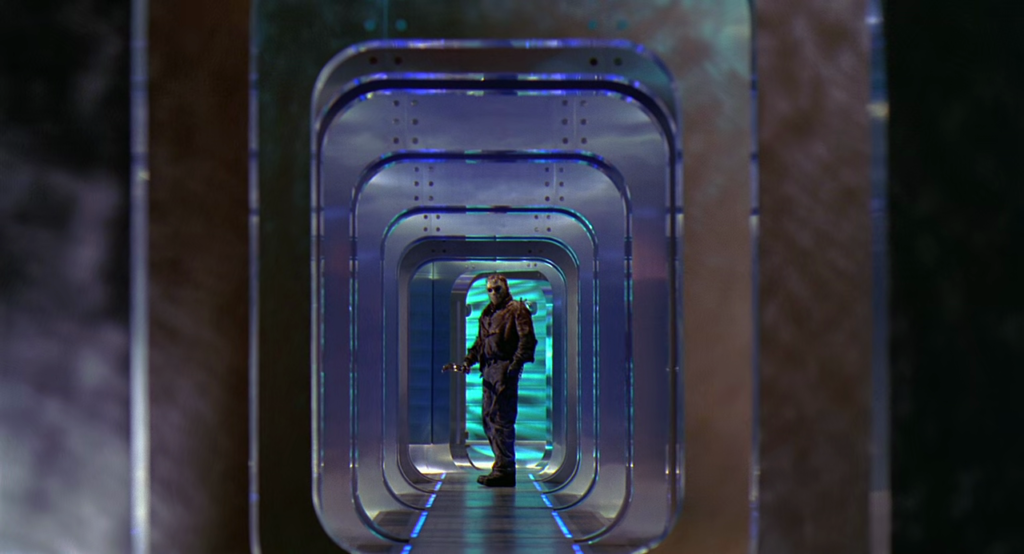
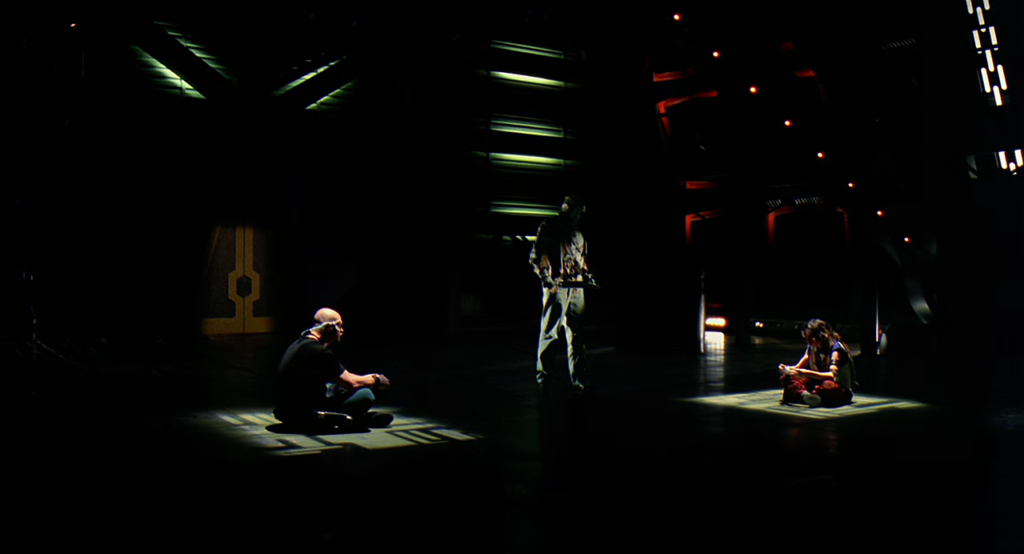
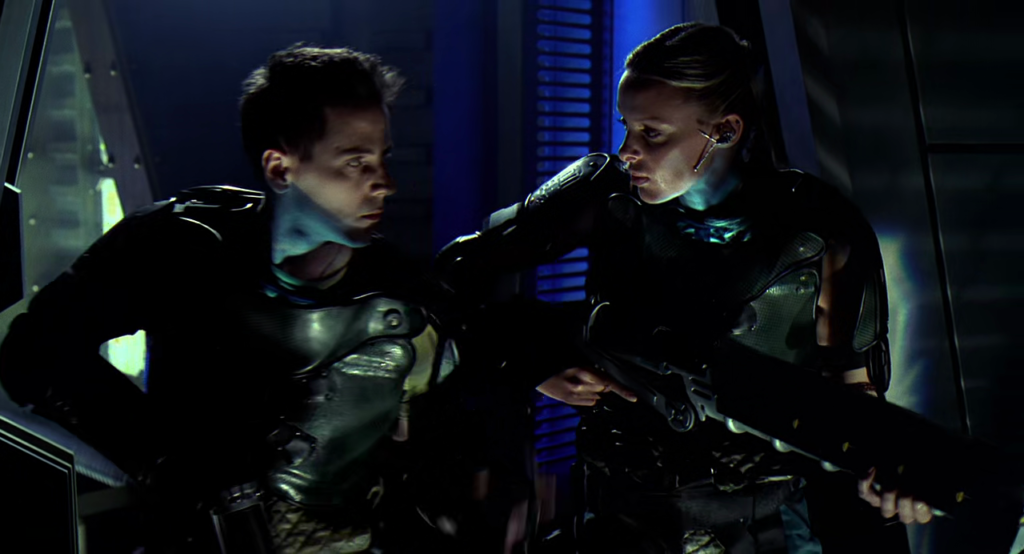
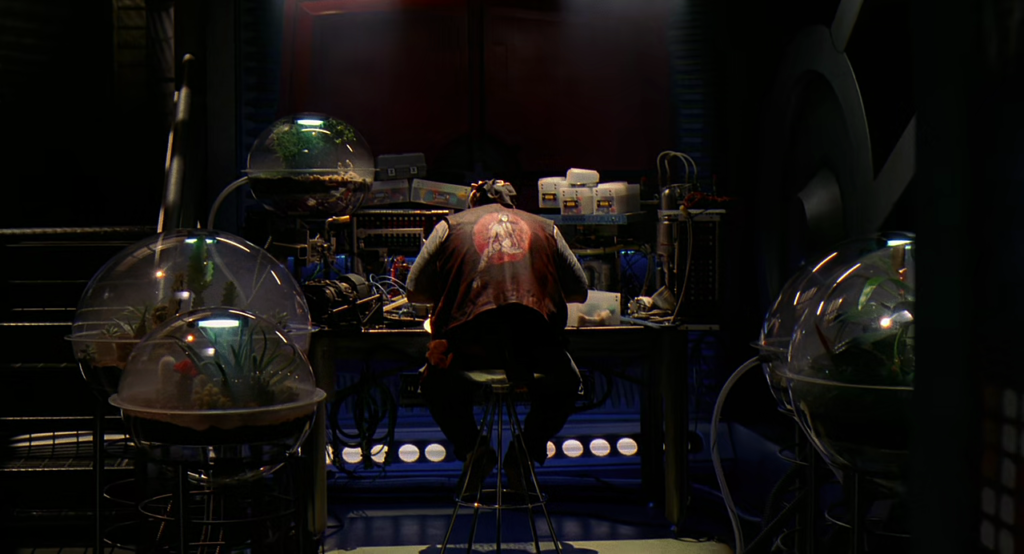
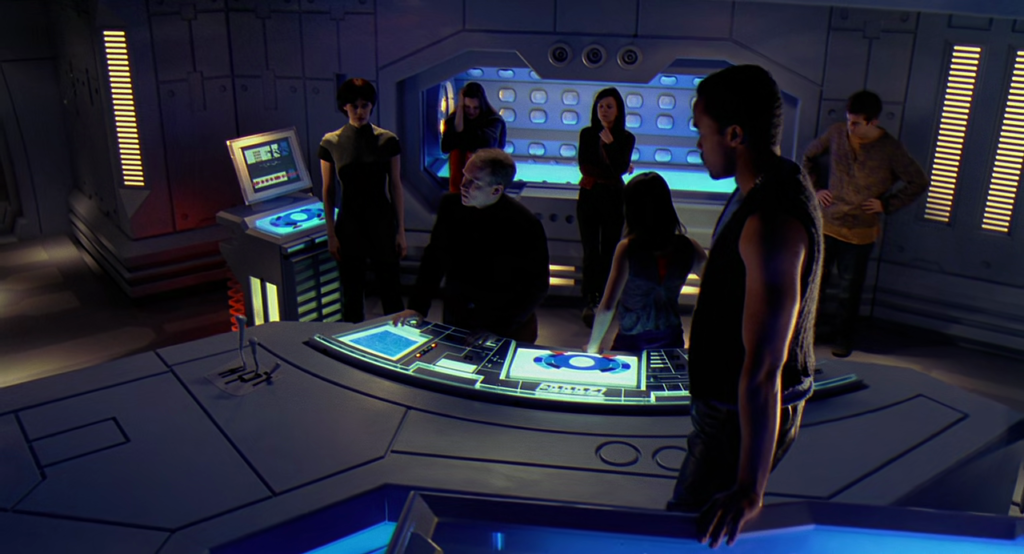
Jason X (2001)
Film review #571
Director: Jim Isaac
SYNOPSIS: Serial killer Jason Voorhees is being held in a top secret underground facility. Orders are given to move him out for study, but the facility’s director, Rowan, believes he is too dangerous to move. Jason manages to break out anyway, and is only stopped when Rowan traps him in cryogenic storage, and unwittingly, herself too. Rowan awakes in the year 2455 on board a spaceship orbiting the Earth, but the people who brought her to the ship also brought Jason too, and he has thawed and ready to kill…
THOUGHTS/ANALYSIS: Jason X is a 2001 film and the tenth film in the Friday the 13th film franchise. The film opens up showing Jason Voorhees being contained in a secret research facility, as previous attempts to kill him have failed thanks to his ability to regenerate. The director of the facility, Rowan, is given orders to transfer Jason out of the facility for study, but she believes Jason is too dangerous to transfer, and wants to cryogenically freeze him. It doesn’t matter anyway, as Jason breaks free of his confines and gets busy cutting through everyone he sees. Rowan manages to lure him into the cryogenic chamber and freeze him, but an accident means she is sealed in and frozen too. Over four hundred years later, Rowan (and Jason) is discovered and brought aboard a spaceship to be revived. Not realising that they have brought aboard a relentless killing machine, Jason picks up where he left off and goes about slaughtering the crew, while the survivors try and work out a way to stop him. The film is about what you’d expect from a slasher film, as Jason mows down people constantly without any rhyme or reason. The sci-fi twist to the typical Friday the 13th film could have two outcomes: it offers a fresh take on the formula, or it can be a travesty of messing with a tried and tested formula that shows a series has run out of ideas. In this case, it is certainly the latter. The sci-fi setting is barely explained: humans have moved to a new planet called Earth II because Earth has become too polluted, but this is mentioned about once. We don’t know anything about this future, and what technologies exist, and not knowing what is possible just leaves things very confusing as if the film makes it up as it goes along. It feels like the film just doesn’t try to take advantage of it’s new setting, and just sticks to filling the film with sex scenes, partial nudity, and slashing without really giving anything new to offer.
I’m not really sure what the film wants to do: it’s obviously not meant to be a really gritty horror film, as there’s no real suspense, overly visceral gore, or jump scares, and as mentioned, just falls back on randy young people having sex to appeal to it’s young adult audience. There’s no creativity with the kills (maybe one or two) or anything unique about them that the setting gives them. I feel like it would probably be easier to stop Jason on a spaceship, as there’s nowhere to really hide, doors can be secured pretty easily, you could lure him out an airlock and wouldn’t have to confront him at all. But I suppose that wouldn’t make an interesting film. I’m not even sure the film wants to be taken seriously. It does try to inject some comedy by having the characters say really awkward puns and quips, but they are all just so oddly timed and out of place that it’s baffling what you’re supposed to take away from the film.
There’s quite a large cast of characters, most of whom you’ll never get to know because Jason kills them off fairly quickly. You can tell right from the off what cliché character they are meant to be. There’s no real development in any of the characters, even the lead, Rowan, just doesn’t have any personality, and we have absolutely no idea about who she is and any details about her life. Jason is more or less the same as he has always been, which is good, but the “Cyber Jason” that emerges when Jason’s body is repaired by the cyber nanobot…things isn’t going to become the new Jason: he just becomes a cyborg which is pretty silly and over-the-top, but again, that might be what the film is going for?
The setting of the spaceship has a fair amount of detail, but the CGI is fairly dire. I don’t think it would have been good even in 2001. The whole film just feels like an episode of a TV series, from the sci-fi corridors which could have easily come from an episode of Star Trek, to the threadbare plot that would have fit neatly into a forty minute episode: the film itself barely stretches over the ninety minute mark. Overall, Jason X just seems like a bit of a mess: it doesn’t have the suspense, jump scares, or gore to make it a decent horror movie, but it’s attempts to be funny and poke fun at the franchise, whether deliberate or not, are never delivered at the right time, and your often left wondering just what the aim and tone of this film is meant to be.
-
#570 – Tank Girl (1995)
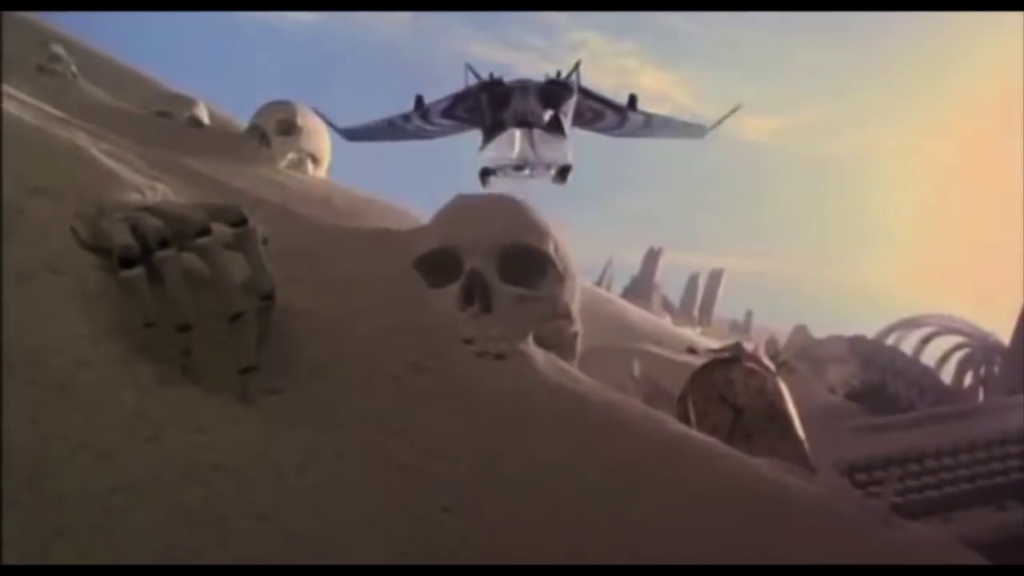
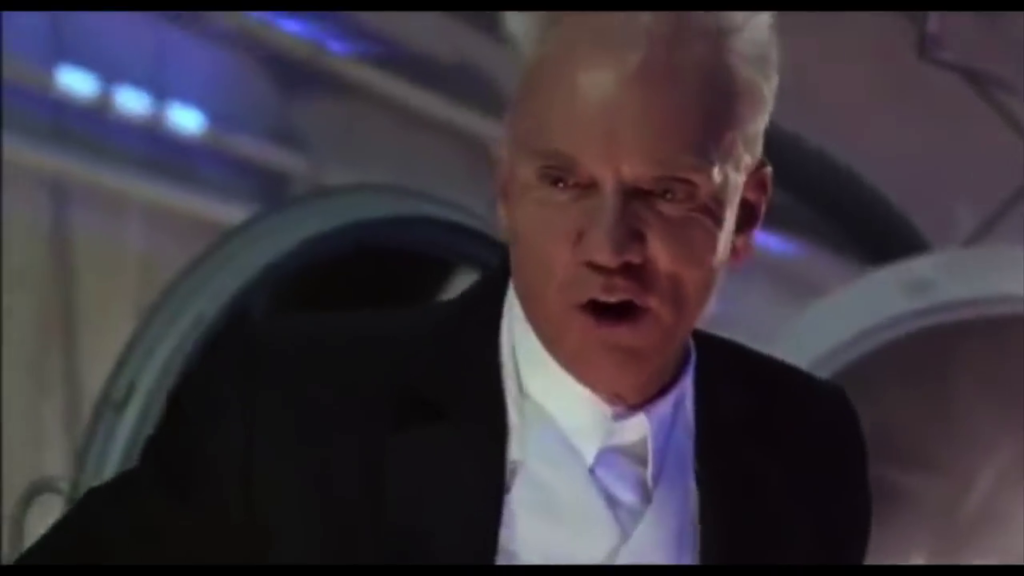
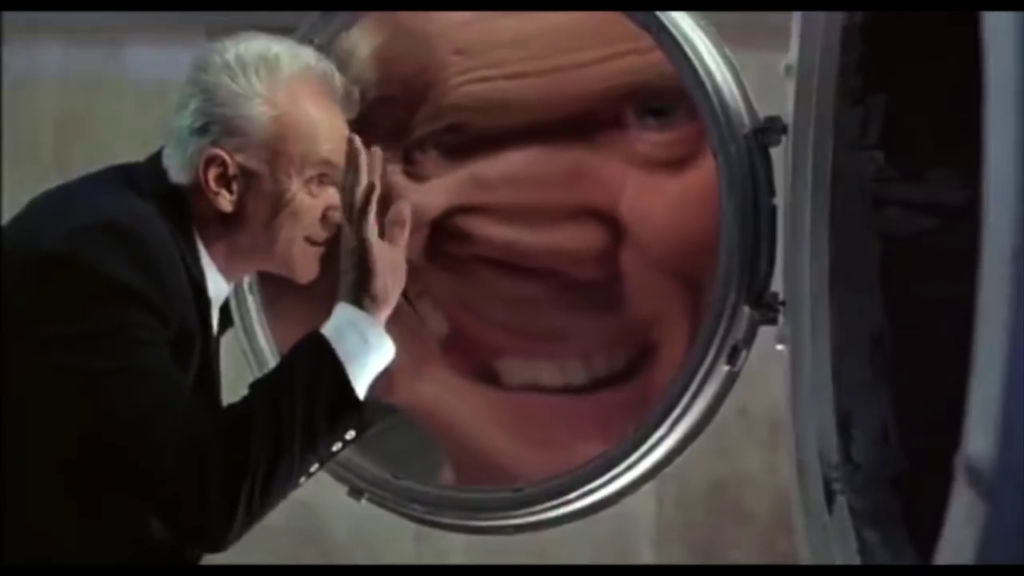
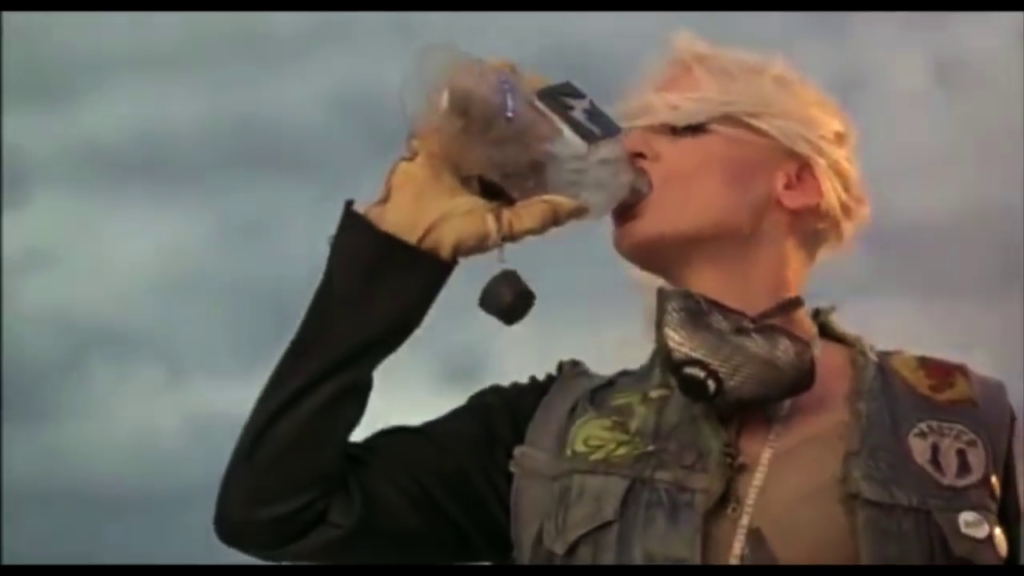
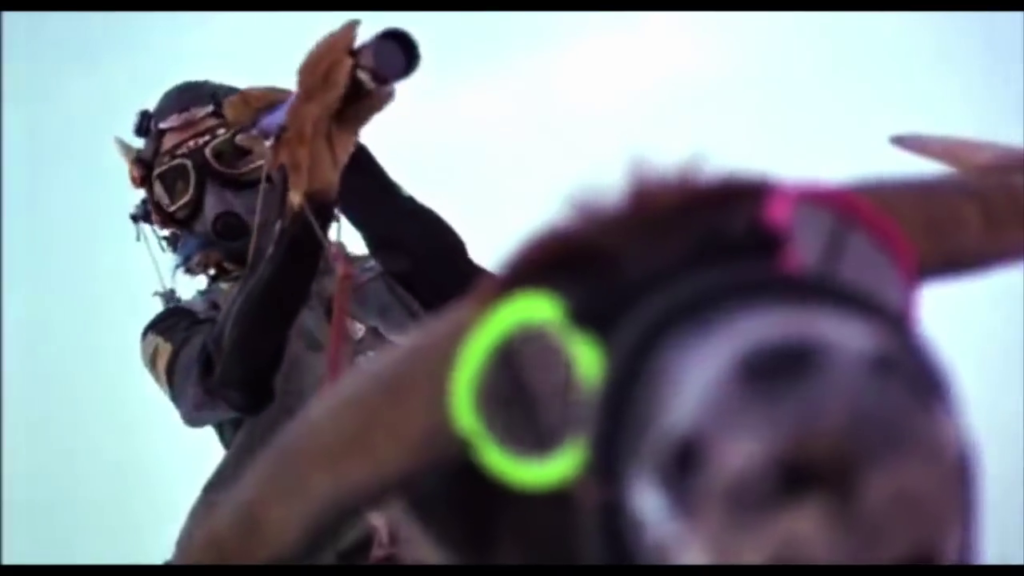


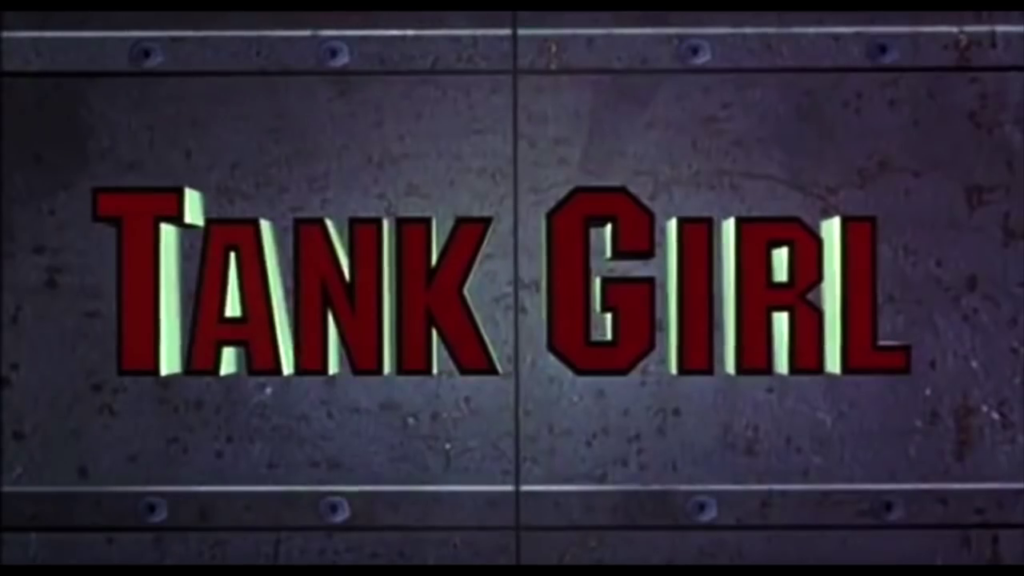
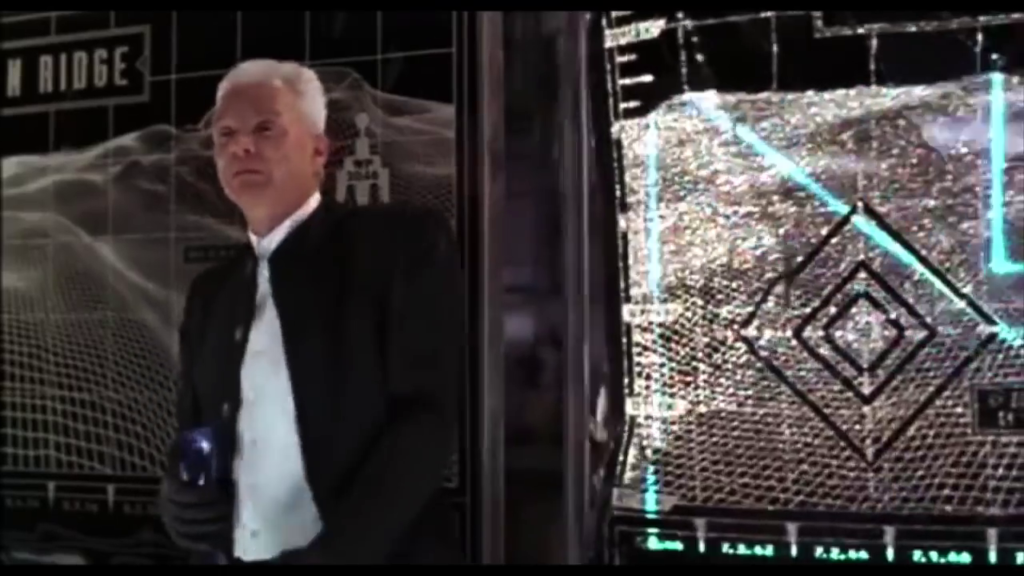
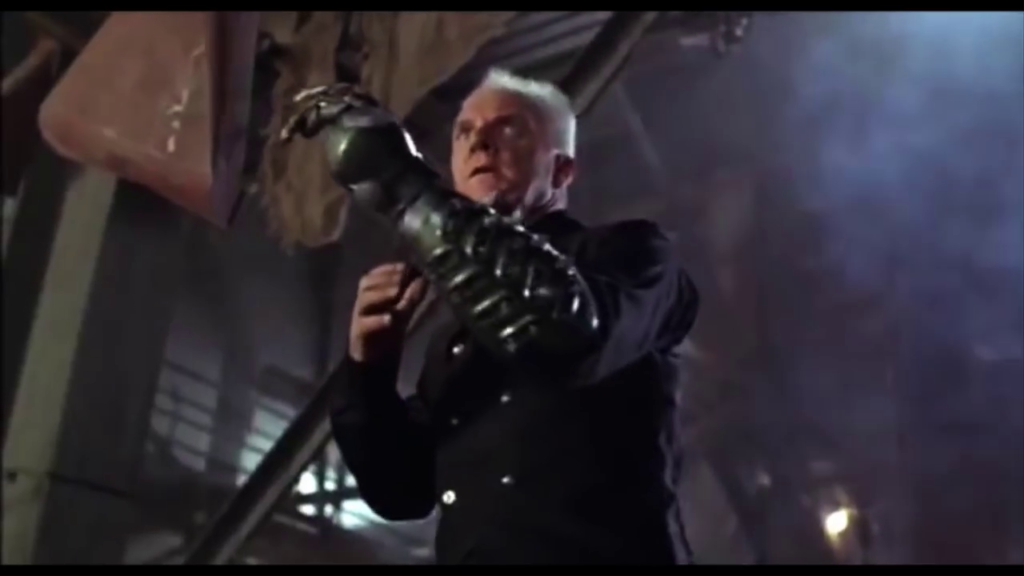
Tank Girl (1995)
Film review #570
Director: Rachel Talalay
SYNOPSIS: After a comet strikes the Earth, society is wiped out and water becomes a scarce resource. The Water and Power company is intent on controlling all of the world’s water, and when they find a group of wastelanders illegally siphoning water, they move in to put a stop to it. Tank girl, one of the survivors of the attack, is captured, but escapers and plots her revenge…
THOUGHTS/ANALYSIS: Tank Girl is a 1995 post-apocalypse film based on the comic book series of the same name. Set in the year 2033, some years after a comet wiped out all society on Earth, water has become a scarce and precious commodity. The Water and Power company is aiming to have control over all of the water, and taking out anyone who gets in their way. A group of people living in the wasteland are siphoning water from the company’s supply, and when they are found out, raid the compound, taking Rebecca, one of the residents prisoner, and killing the rest. Impressed with her talents, the Water and Power Company boss Kesslee wants to hire her for a mission, but Tank Girl refuses, and so she is locked up until she changes her mind. Managing to escape with the help of an introverted mechanic known only as Jet Girl, Tank Girl looks for a way to take revenge against the company. The setting of the film is a familiar post-apocalypse one, with ruins and deserts as far as the eye can see. The story itself is also pretty simple: rescue the girl and stop the bad guy. The film thrives on its simple beats and being chaotic, but the trouble with the film format is that it requires a direction and a structure, which ultimately, Tank Girl just doesn’t do, nor does it seem to want to.
Every character has essentially one dimension to them, and their roles are firmly set in stone throughout the film. There’s points in the film where there is some attempt to give Tank Girl some motivation and background, but it only really serves to make you question the bizarre and over-the-top antics, when you could just revel in them. There isn’t too much of this, but it does slow down the film at points. As mentioned, the characters are very one-dimensional, and this has some good and bad points: Tank Girl’s constant quips in every situation keep the film from getting dragged down and too serious, but this also has the effect of making her character very predictable: every situation she faces, you know that she’ll just brush it off with a dismissive quip, and in some ways makes her chaotic character a bit more predictable. Jet Girl provides a nice counterbalance to Tank Girl personality-wise, but their relationship again doesn’t go any deeper than that. Malcolm McDowell is Malcolm McDowell as the villain: no frills, no nonsense, just a classic villain, and there’s nothing wrong with that.
The film really revels in both its comic book origins and punk aesthetic. Moments of the film are done in the style of comic panels that are colourful and chaotic, but there’s a strange randomness to them in the sense you never know when they’re going to come in, and there’s large chunks of the film where they just don’t appear to make them a consistent storytelling device. You get the feeling that they’re using these comic panels to avoid actually filming scenes and cutting corners, and the director confirmed that there were whole scenes unfilmed and replaced with these comics instead: resulting in these panels taking you out of the action, and returning you in a completely different scenes without threading them together. The whole punk aesthetic is quite cool, and gives the film an edge: the soundtrack is packed with punk tracks, and the chaotic costumes lean into that scene. I think the main issue with the film is the overwhelming smell of studio interference. It feels like Tank Girl constantly wants to revel in much more sex and violence (as it does in the source material), but it always just falls short: kills are always a little bit obscured or done offscreen, and any reference to sex or nudity never goes as far as it should, and it feels like there’s an artificial limit on it, almost as if toy keep the film in a certain age rating. Again, the director often mentions that there was a lot of studio interference in this film, which probably resulted in it being restrained in the final cut. Overall, Tank Girl has a lot of anarchic energy and leans heavily on the comic book and punk aesthetics to make itself stand out. It’s certainly not for everyone: I imagine the very one dimensional characters and predictable quips may not be to everyone’s taste, but there’s enough energy and decent performances to at least keep it interesting. Regardless, there’s definitely an issue with the film constantly feeling like it was toned down, and is not allowed to be as gory or explicit as it wants to be in line with the source material. There are still plenty of people that like this film though, and I think it’s one that is going to be strictly down to personal preference, and whether the punk and chaotic aesthetic appeals to you or not.
-
#569 – Paul (2011)
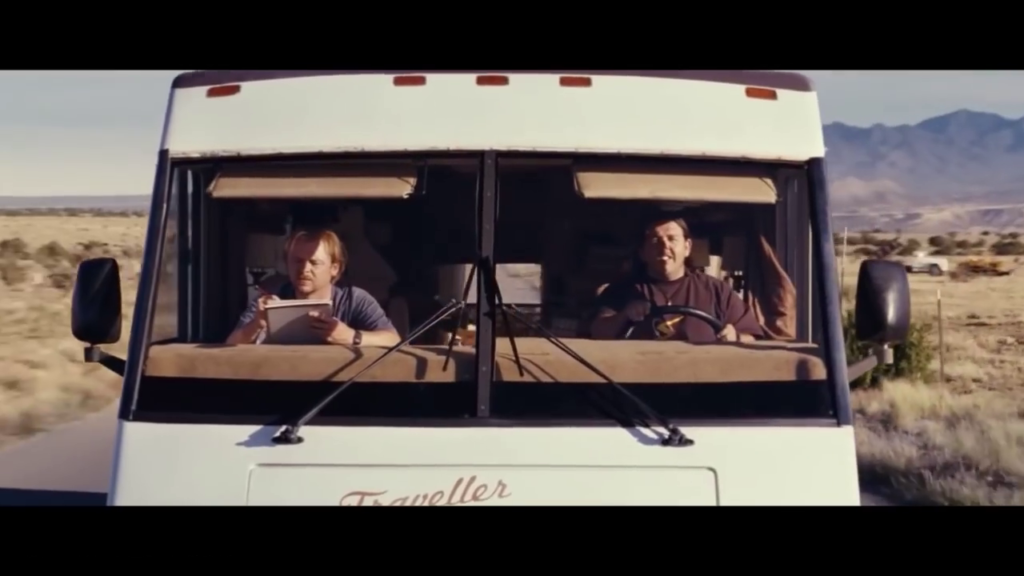
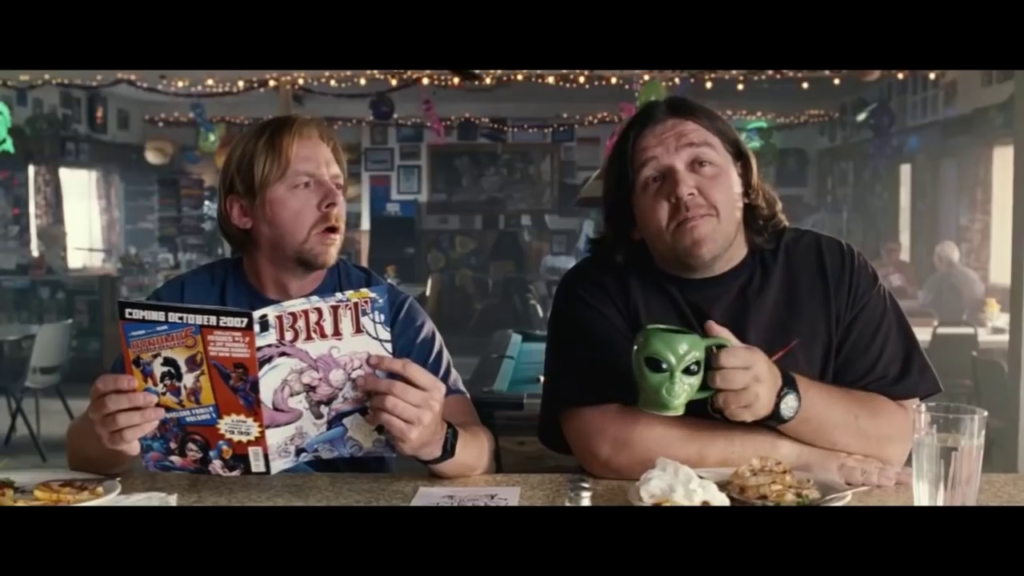
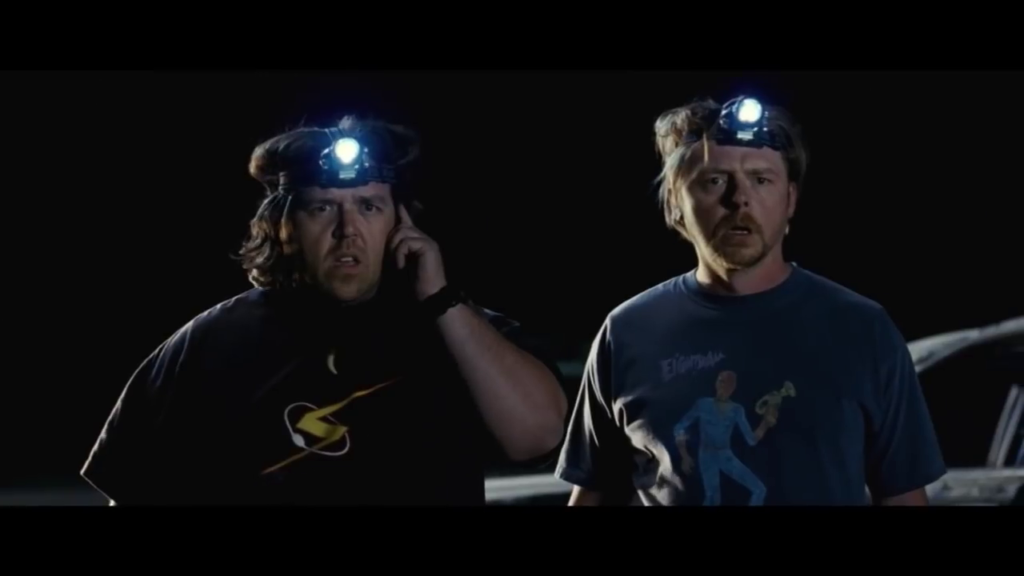
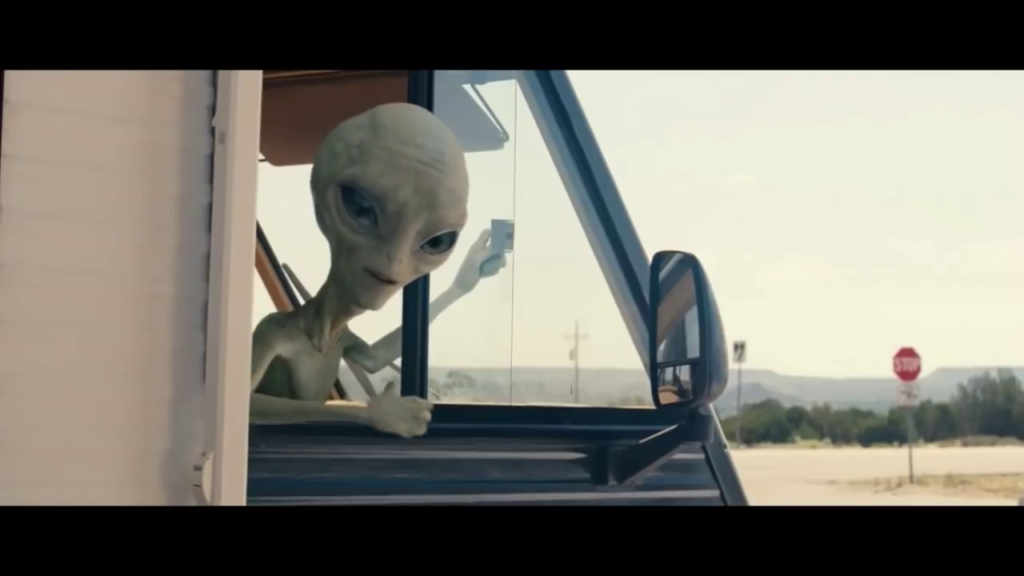
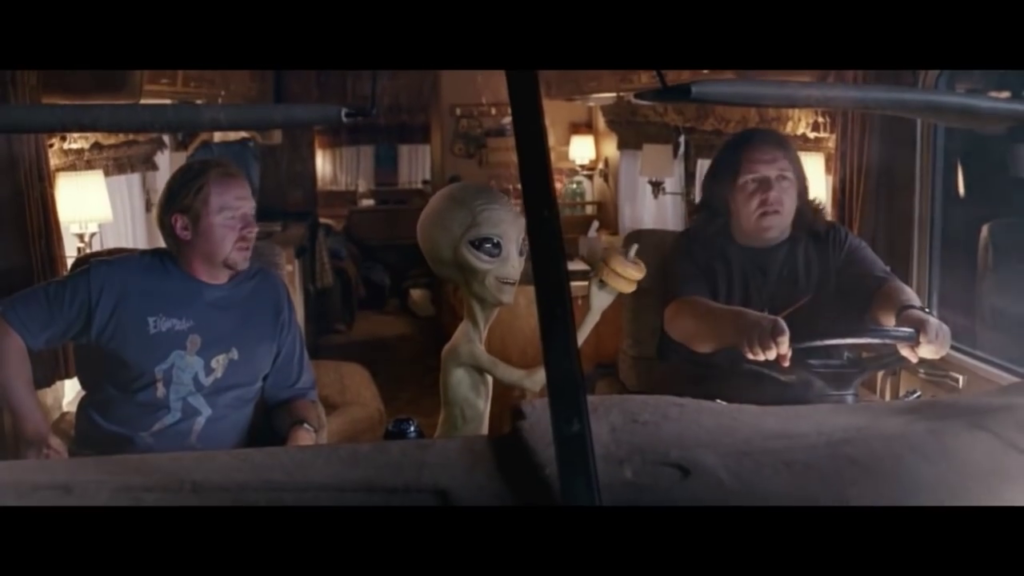
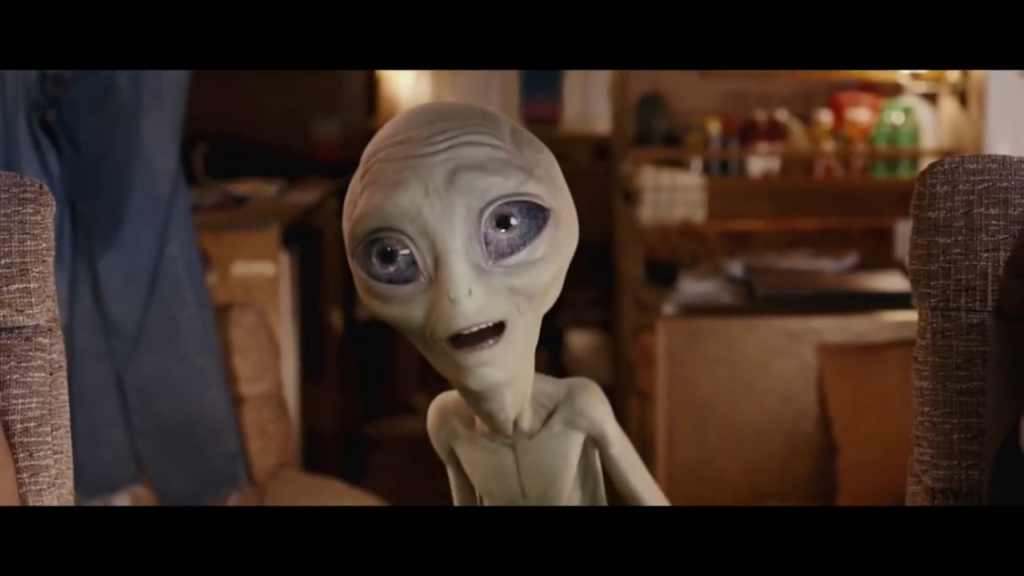
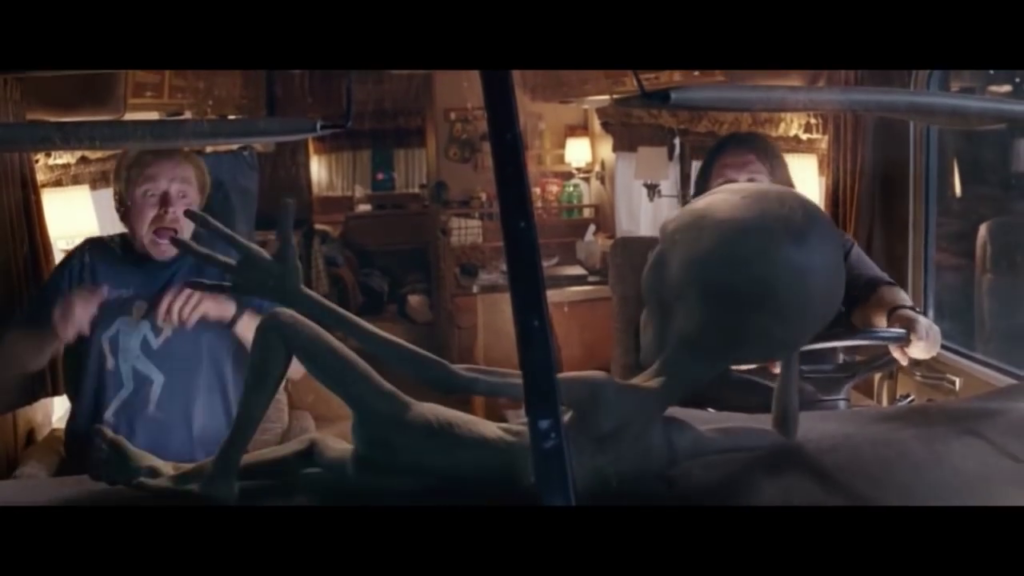
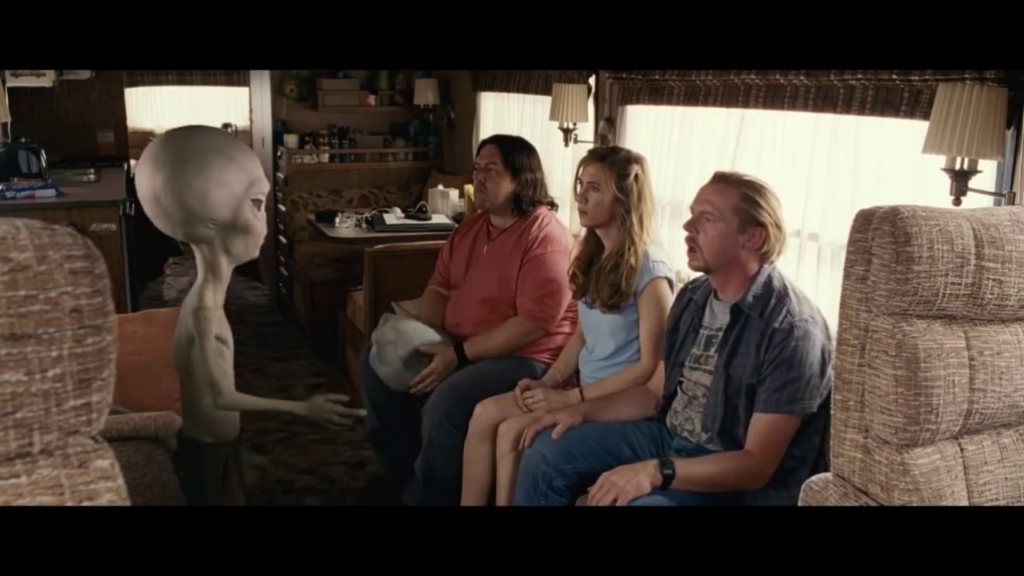
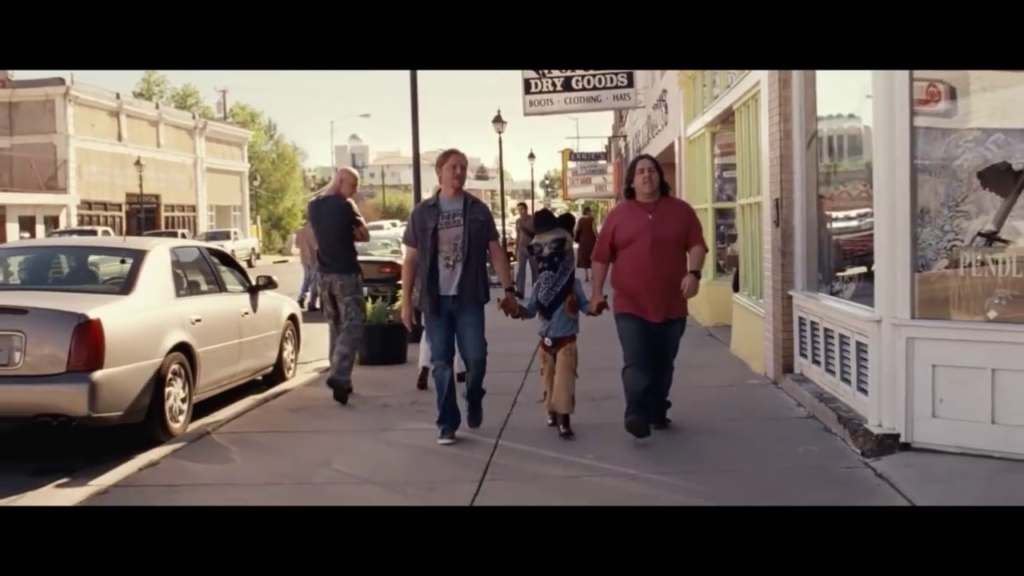
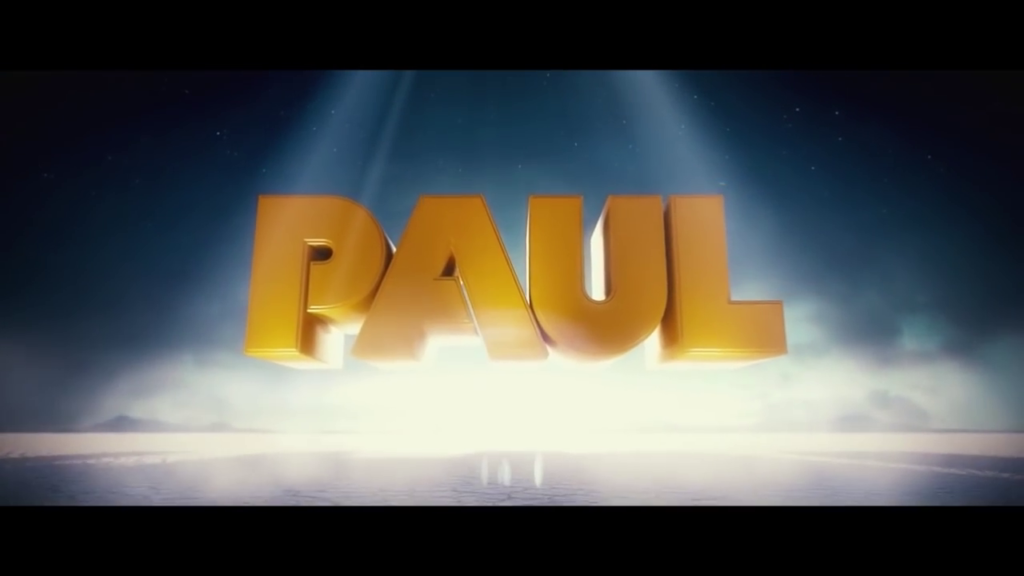
Paul (2011)
Film review #569
Director: Greg Mottola
SYOPSIS: Graeme and Clive are two nerds attending Comic-con. On their road trip towards Area 51, they come across an actual alien named Paul, who is on the run from the authorities that have been holding him. Graeme and Clive end up helping Paul to get to the spaceship that is waiting to pick him up, and in doing so, end up getting chased by a number of people that they have annoyed in the process…
THOUGHTS/ANALYSIS: Paul is a 2011 sci-fi comedy film. Starring Simon Pegg and Nick Frost as Graeme Willie and Clive Gollings, two British nerds and sci-fi artists/writers who are attending San Diego Comic-Con. Being alien fanatics, they take a trip out into the Nevada desert to the sites of Area 51 and the Roswell incident. On the road along the way, they come across an alien named Paul, who is being chased by the authorities after he escaped their custody, and is on his way to meeting a spaceship to pick him up and return home. Thus begins a buddy road trip film that plays out pretty much how you would expect: with plenty of laughs, silliness, and some heartfelt moments too. It’s clearly meant to appeal to a more casual filmgoer, but there’s a decent amount of quick references that more avid fans will pick up on. The story offers few surprises, but you don’t really notice because the film instead offers some quickfire comedy and solid momentum that keeps things rolling. It has a feel of Blue Brothers in parts in the sense that it builds into a chase film that has enough chaotic energy to bring all the characters together and make something interesting.
Simon Pegg and Nick Frost, as always, play the leads with good chemistry, and Seth Rogen as the alien Paul offers a character with enough gravitas and presence that contrasts with Pegg and Frost, but very much like a typical Seth Rogen character. It feels like his character is meant to be a lot more crude, but is perhaps toned down to make the film more mainstream, with only a bit of an edge. Even though Paul is obviously CG, he is still animated and expressive, and his interactions with the cast feel natural, which is a solid plus for the film. The supporting cast are very typical characters, but again, for the casual film viewer, play a part well, and you know what their role is very clearly and quickly.
Paul is a film that works with very broad strokes: it’s comedy is quick and energetic, the story is condensed and easy to follow, and the characters have good chemistry. However, going any deeper you find an awful lot missing that is needed to make the film more memorable and gripping. It feels like the film was conceived with these very broad stroke, and little was done refining this underneath the premise. It plays it safe in the sense that it clearly needs to appeal to a mainstream audience (apparently this is what the funding for the film was based on), and so any smarter references or parodying other science-fiction works is reduced to easily missed one liners that don’t disrupt the flow of the film. The film is still lots of fun, even if you’re not a fan of the crude (but never too crude) humour. It could have been a lot more, but what we have is good enough for an entertaining ride.
-
#568 – The Island (2005)

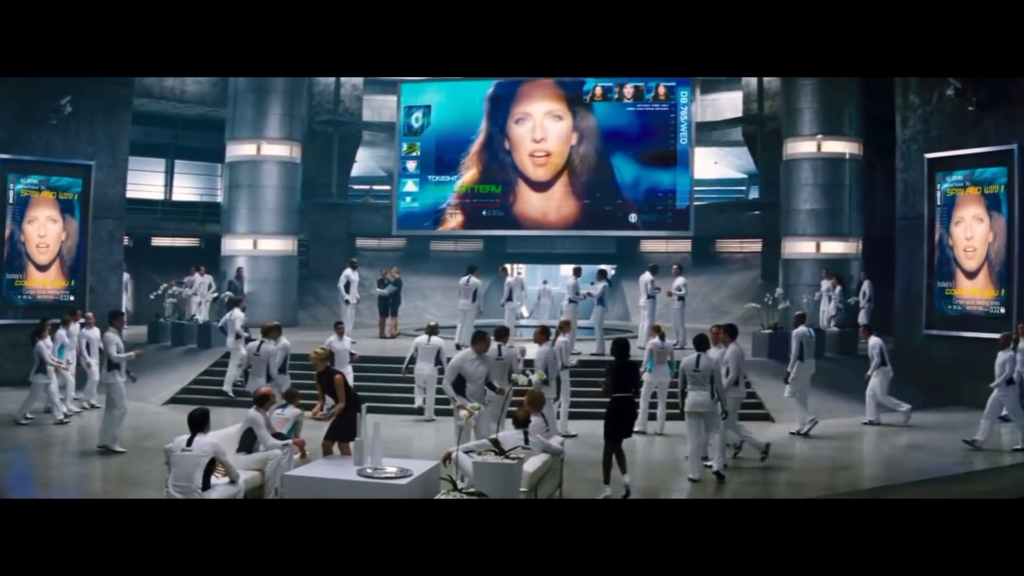







The Island (2005)
Film review #568
Director: Michael Bay
SYNOPSIS: Human survivors of a post-apocalypse “Contamination” live their lives in an underground silo with every aspect of their lives monitored and regulated. The only way out is to win a random lottery, wherein the winner gets transported to “The Island,” an apparent paradise. Lincoln Echo Six, one of the residents, begins asking questions about the outside world and The Island, and when his friend Jordan Two Delta wins the lottery to go to the island, he takes the chance to try and find out for himself what that entails, leading to a discovery that forces him and Jordan on the run…
THOUGHTS/ANALYSIS: The Island is a 2005 sci-fi film. It is set in an underground bunker, where the human residents are told they are the last surviving life on the planet, and their lives are monitored in every detail to ensure their safety. Lincoln Six Echo is one such resident who is questioning the whole system, much to the annoyance of the director. The only way to leave the facility is to win a random lottery, where the winner will be take to “The Island,” a paradise where the winner can live a life of luxury. The setting of the film should be familiar to those who know anything of the genre, as it pays homage to films such as Logan’s Run, in setting it in a dystopian futuristic society where certain things are forbidden (love, mostly). It, subsequently, should come as no surprise that this whole set up is hiding a dark secret, and when Lincoln Two Six discovers that The Island doesn’t exist, and they are all just clones being used as spare parts/organs for their sponsors who paid for them to be made, he and Jordan Two Delta, who has just won the lottery to go to The Island (which in reality is just having your organs harvested), make a break for it and escape into the outside world. They are pursued by a mercenary force on the orders of the director to have them returned. The whole setup should come as no surprise to anyone familiar with this type of film, but the familiarity with the concept allows the characters a bit more breathing room to develop. The trouble with this, is that the film doesn’t really do that: it just turns into a chase film with little direction: I get that the two main characters are just trying to survive and perhaps not thinking about a long-term goal, but this does leave the film feeling, as a viewer, a little rudderless.
Lincoln and Jordan are pursued by this band of apparently highly trained mercenaries, but the fact that they are unable to stop two people that have never been in the outside world or seen many of the things that exist there just makes them seem a bit incompetent. Despite a lot of focus being on the intimate relationship between the two leads, the film does have a fair few big action scenes, unsurprisingly brought to you by director Michael Bay. As you might expect, there are scenes full of high speed chases, explosions, and loud noises that are designed to have a lot of energy and hype. The problem with this though, is that it doesn’t really mix with the other part of the film, and again, that these two people who have never been in the outside world are able to survive these over-the-top sequences just seems implausible. The film does feel like it is made up of two different films that just do not mix. There’s a number of scenes that are quite gory and visceral too, which feel a bit much for a middle-of-the-road sci-fi film. The trailer too, makes the film seem like more of an action film, with comedic elements, when that just is not the case, so you can understand why it received mixed reviews for failing to deliver what it promises.
The chemistry between the two main characters, played by Ewan McGregor and Scarlett Johannsen is pretty good, but the fact that they are described as being like fifteen year olds who have no idea about sex, relationships, the outside world etc. makes them very odd characters to try and get to grips with sometimes: sometimes you can be convinced that they are clones raised in an underground silo, other times it just doesn’t seem plausible. I imagine it’s hard to write characters that fulfil their premise, and I don’t think it’s the fault of the actors, who do a good job, but I do think the film sets itself quite a difficult premise to implement, especially as the film is marketed as a more casual sci-fi film. The supporting cast is composed of familiar faces such as Sean Bean and Ethan Phillips (Who played Neelix on Star Trek Voyager), and again help ease the viewer into the film. While the film does deliver some different parts that work, they don’t come together to form a cohesive whole in and of itself. The film is marketed as something it is not, and I’m not sure what the vision of it is: it obviously pays homage to a specific type of dystopian sci-fi, but how it is building on it (via subversion parody etc.) never becomes apparent. The story is a bit of a mess, and feels very implausible at points, and it doesn’t push its character development enough to make it’s leads stand out. Has some good parts, but becomes a bit of a jumbled mess when stitched together haphazardly.
